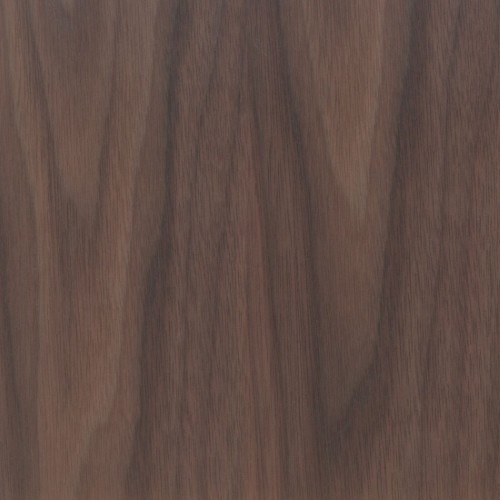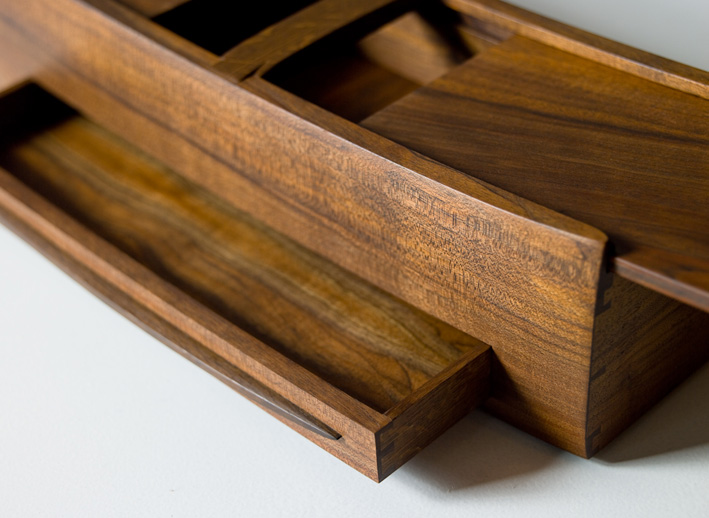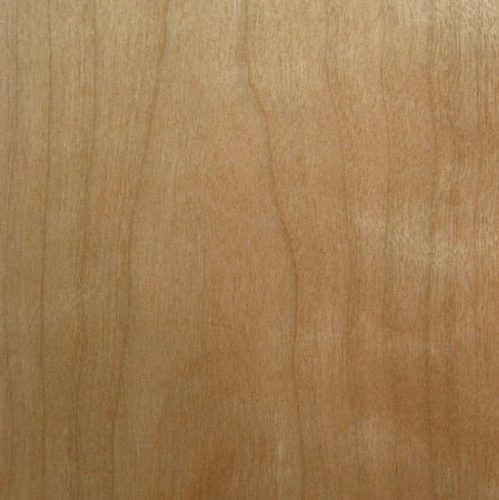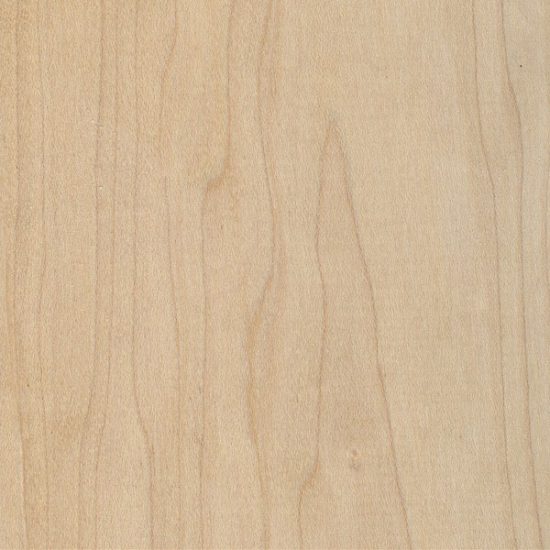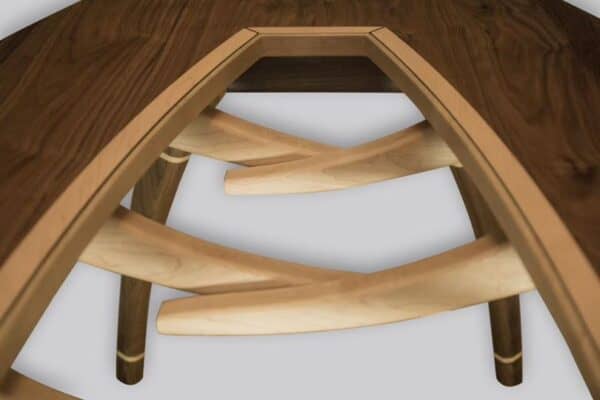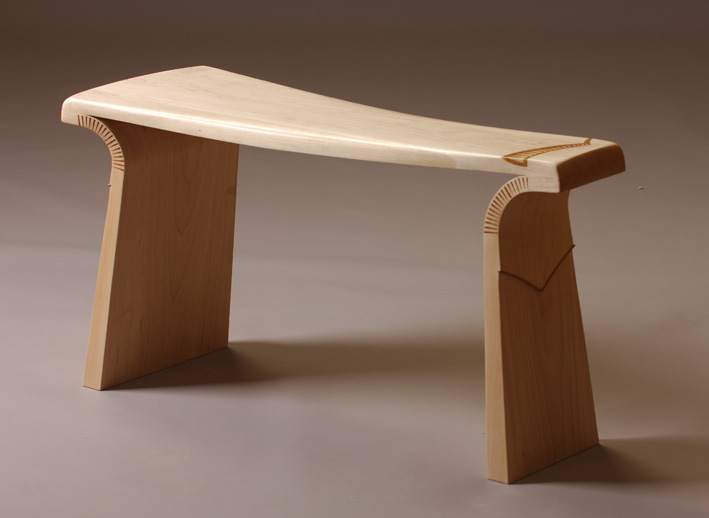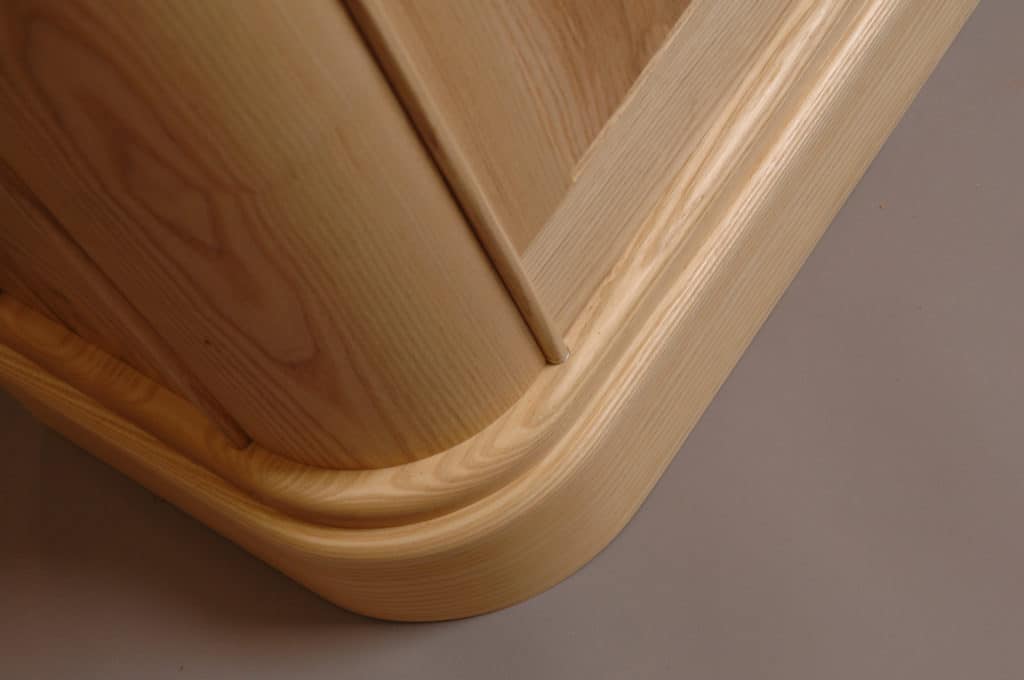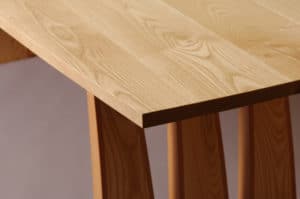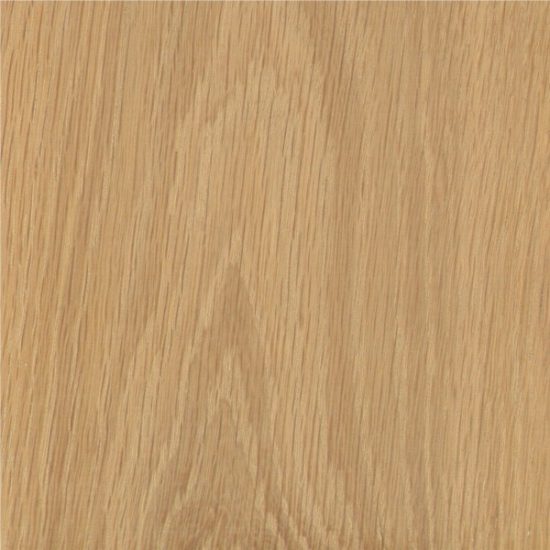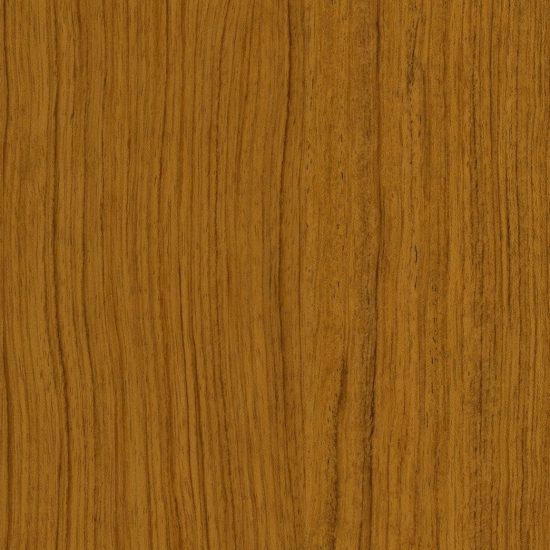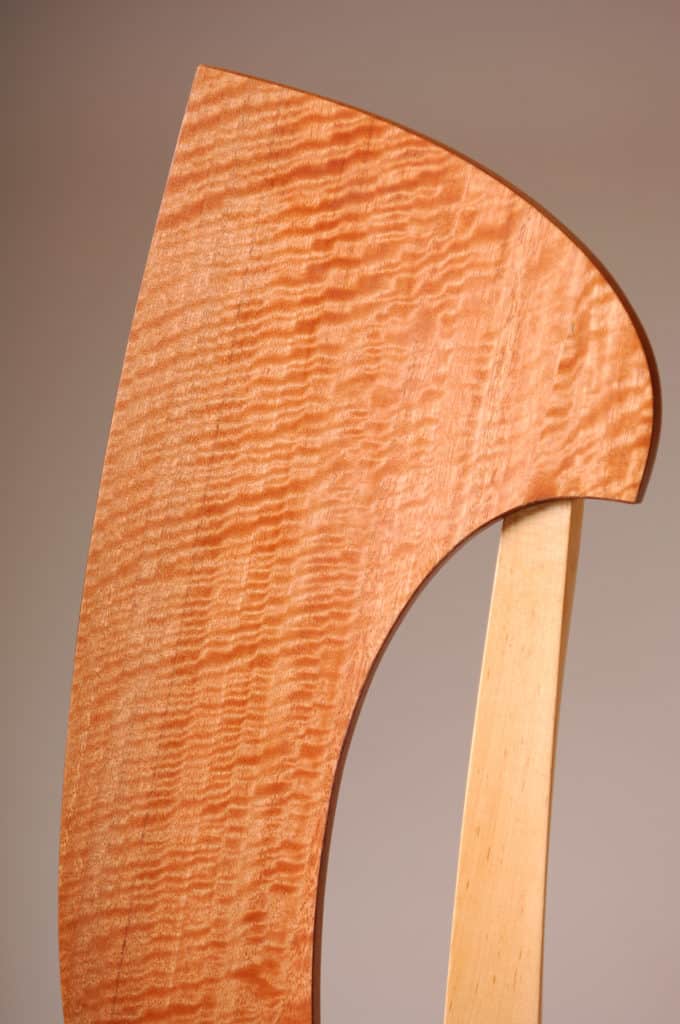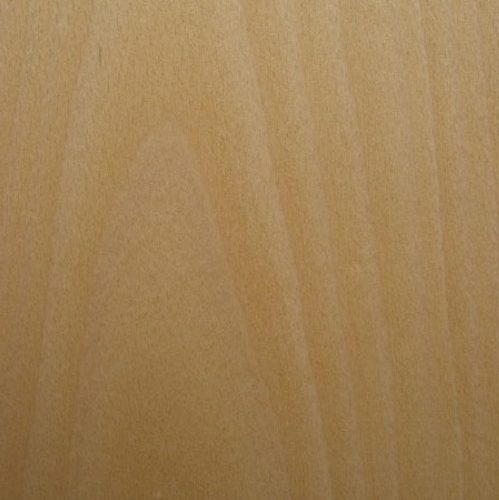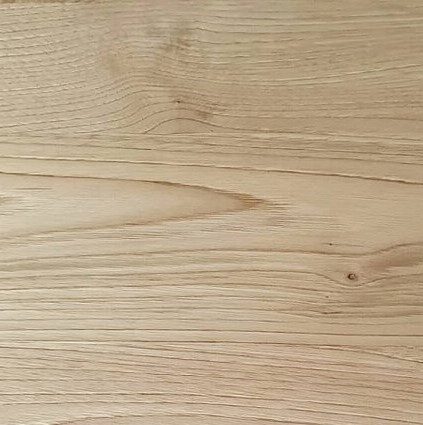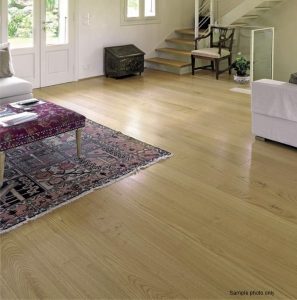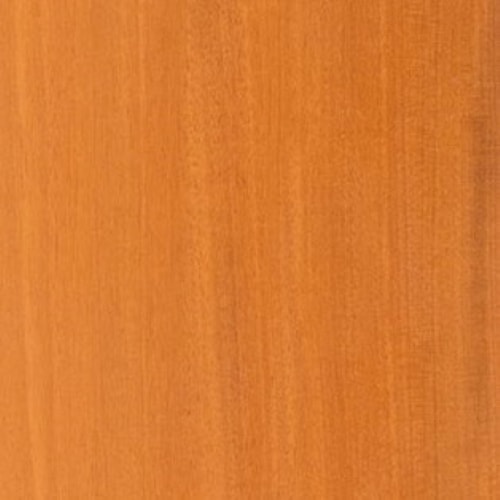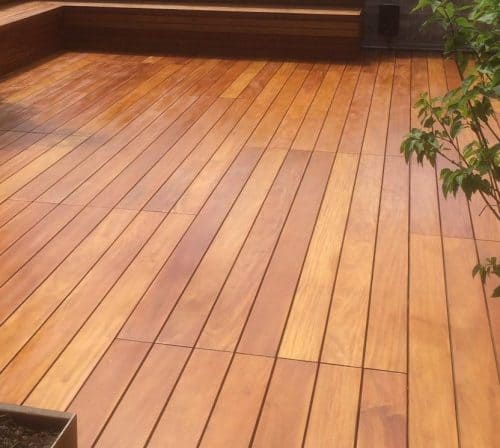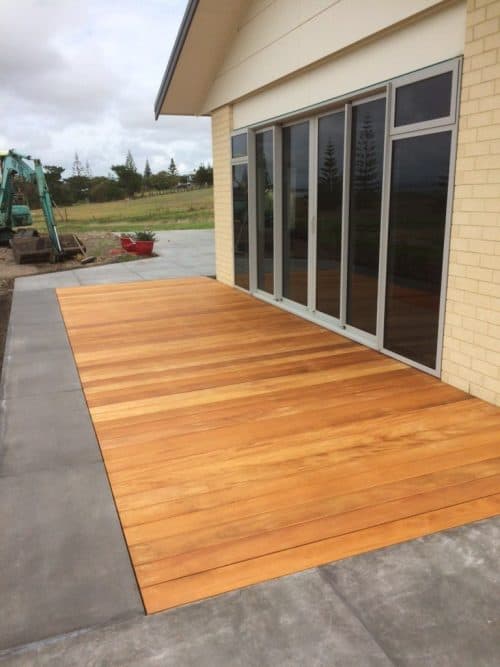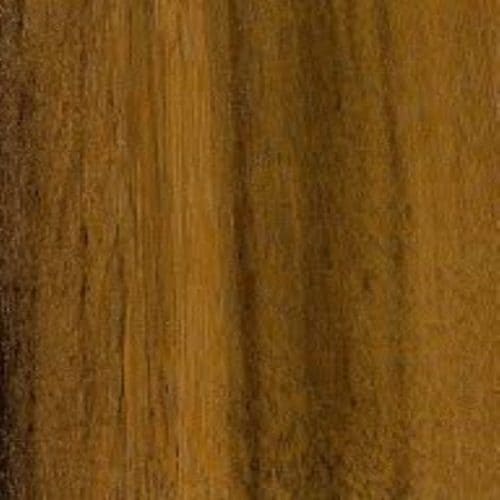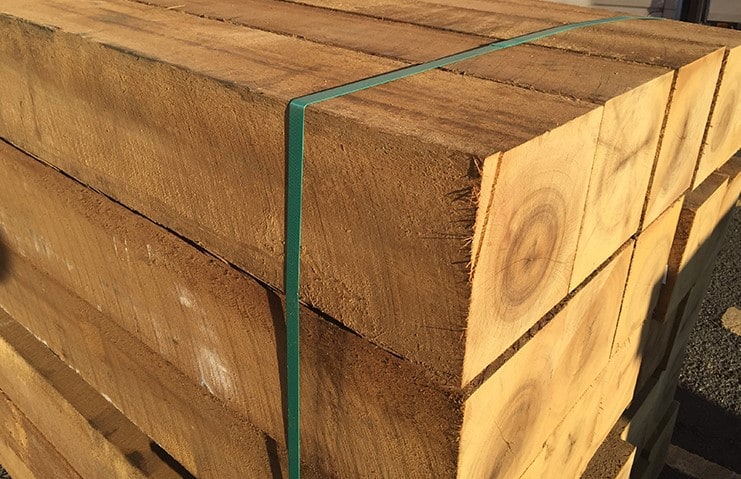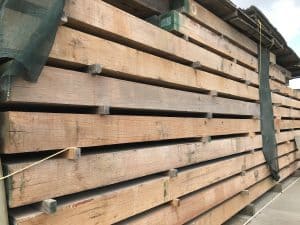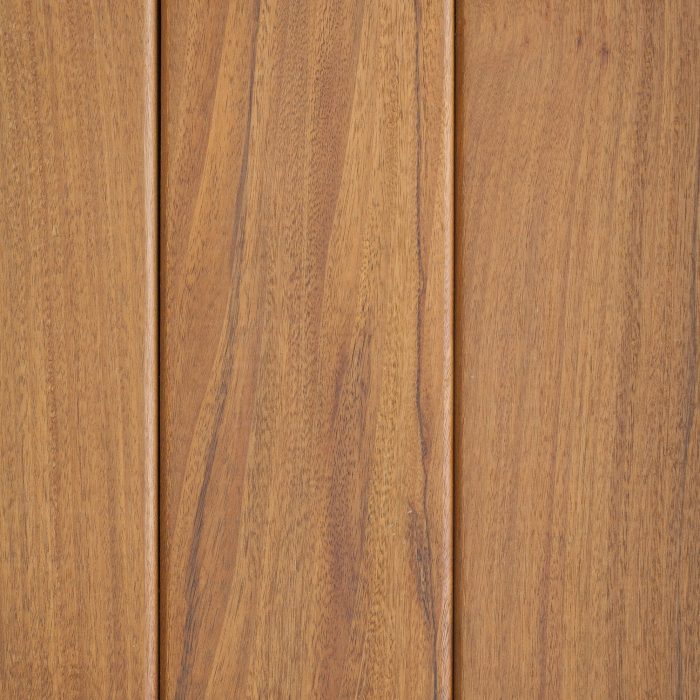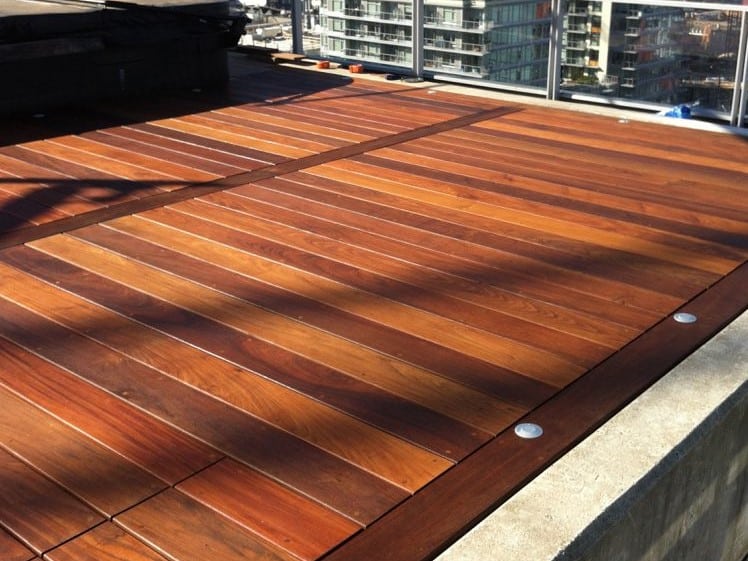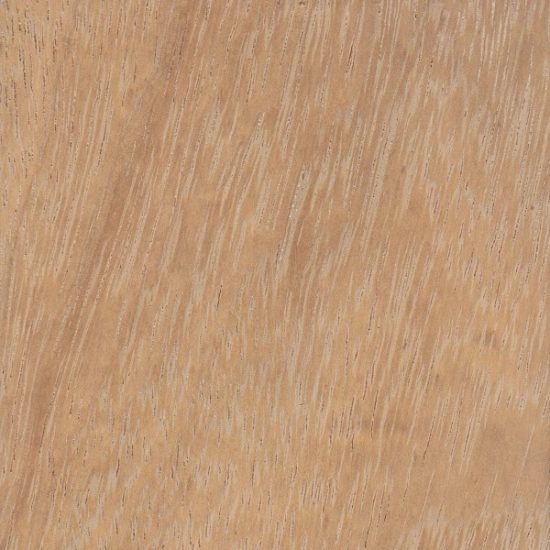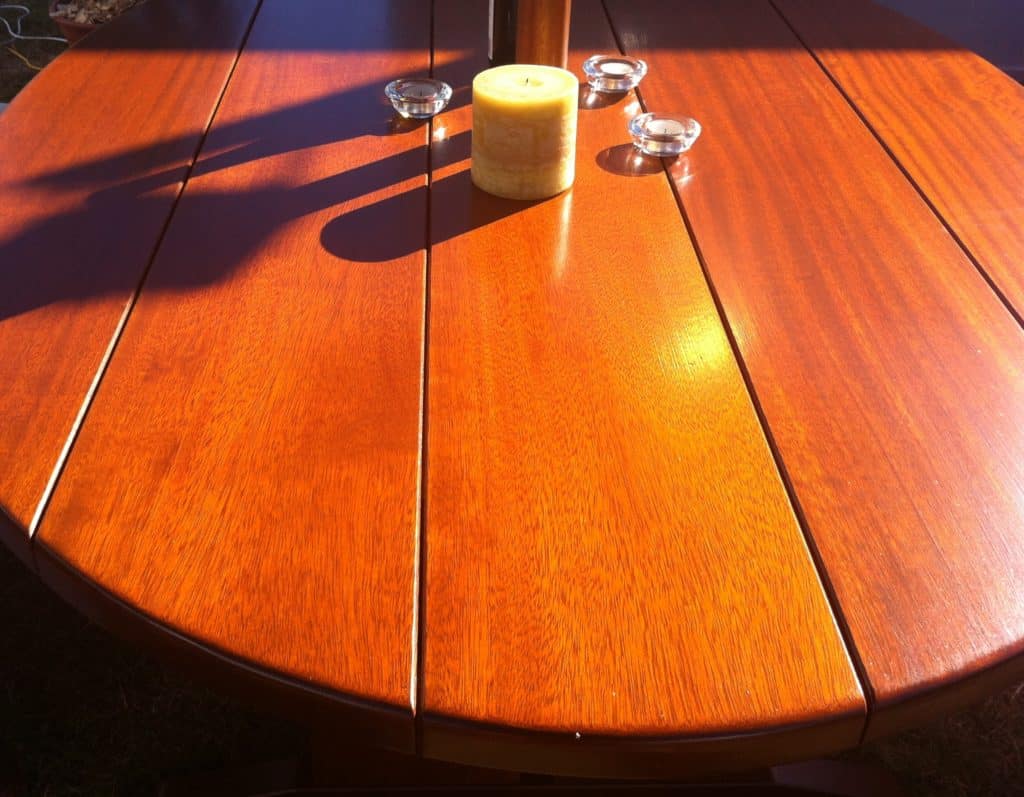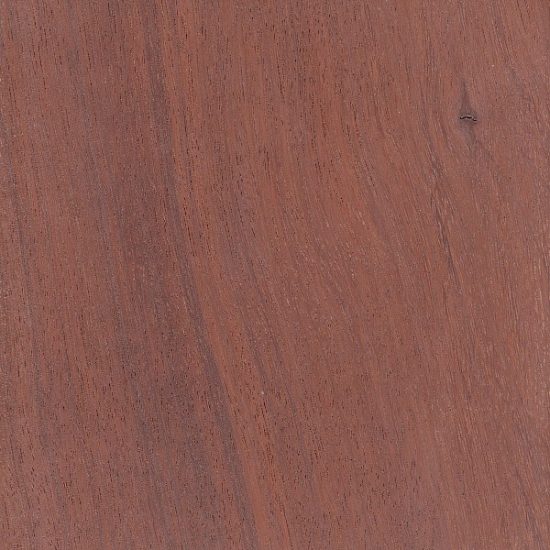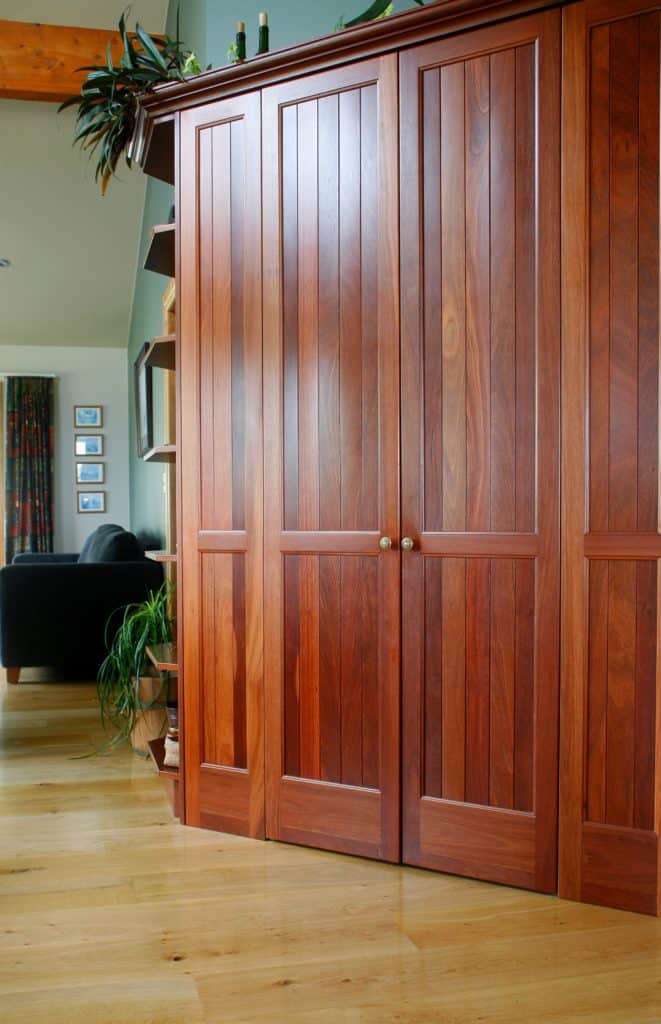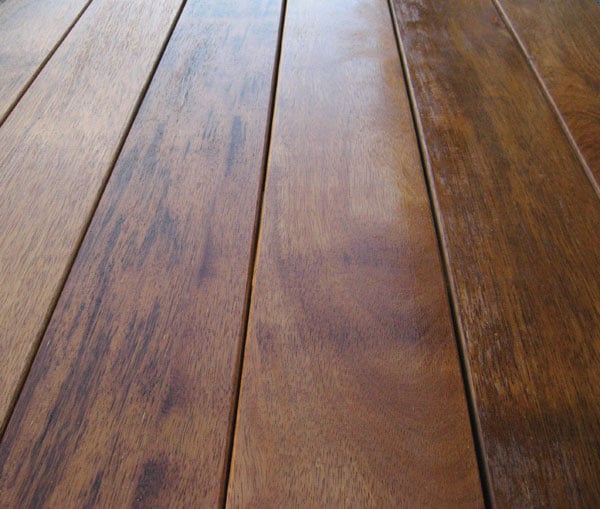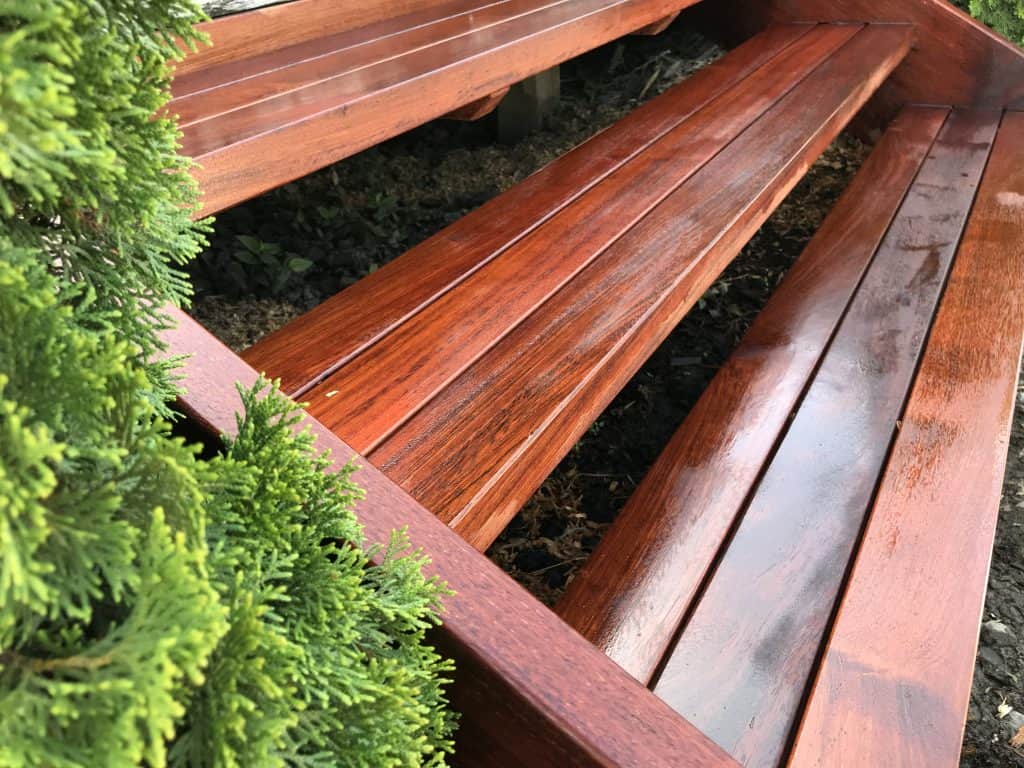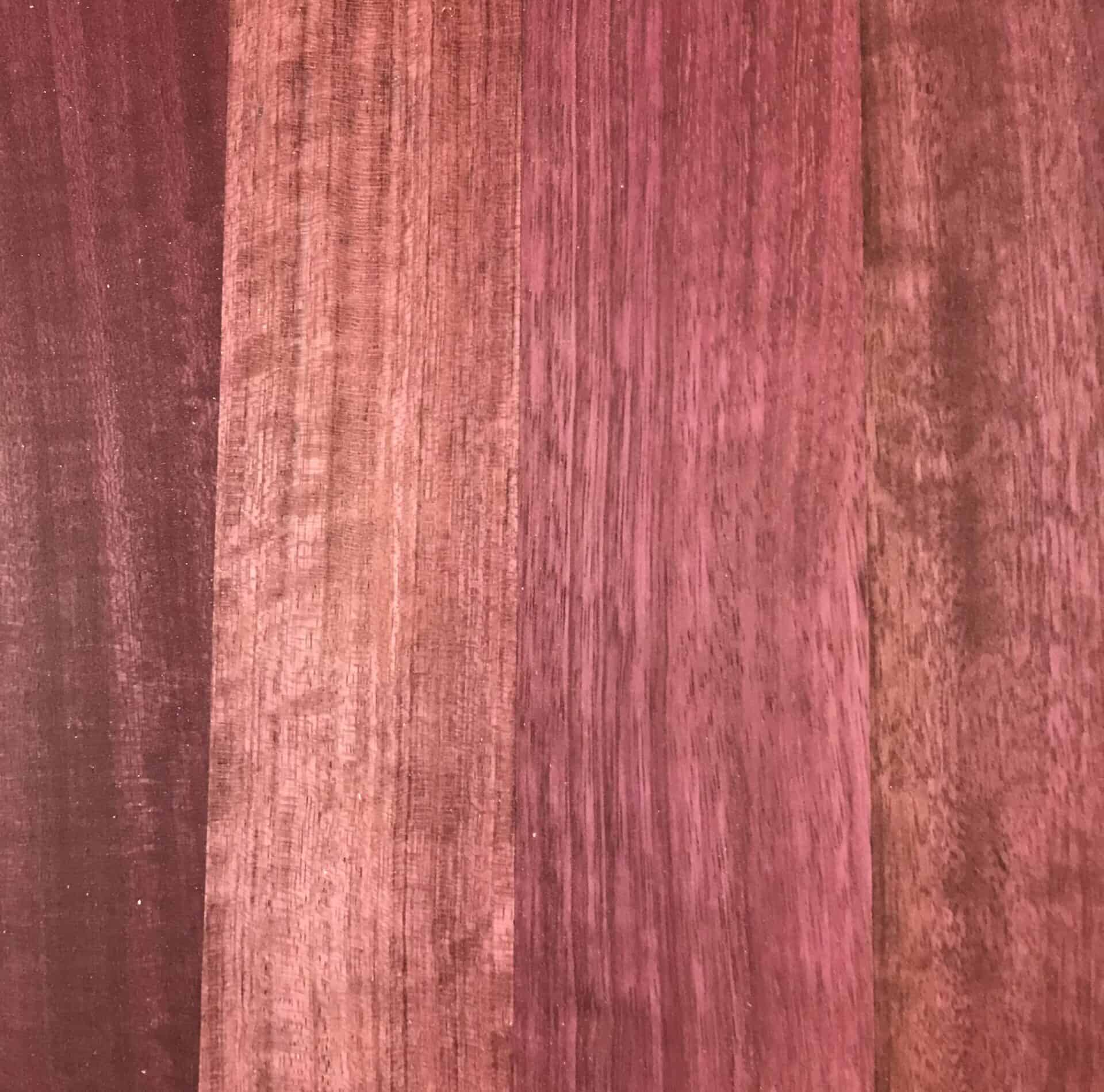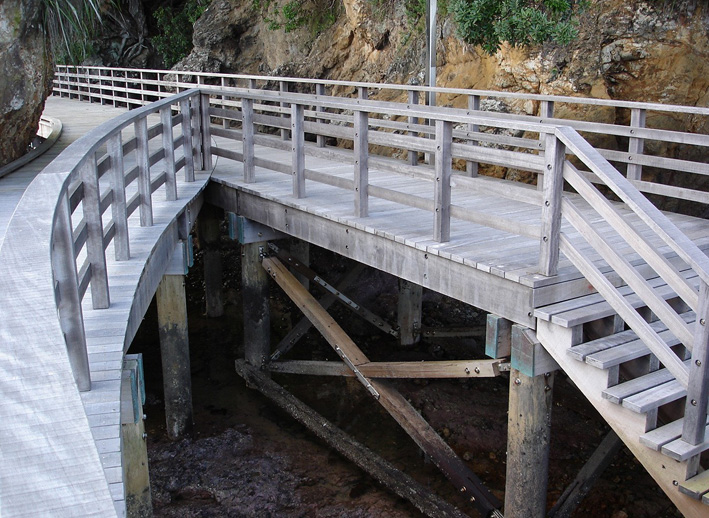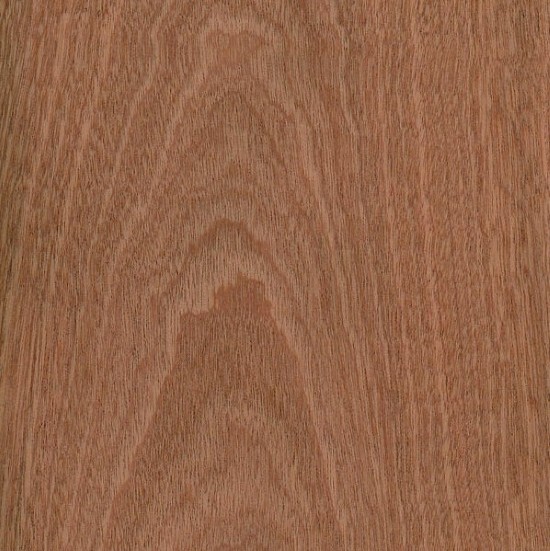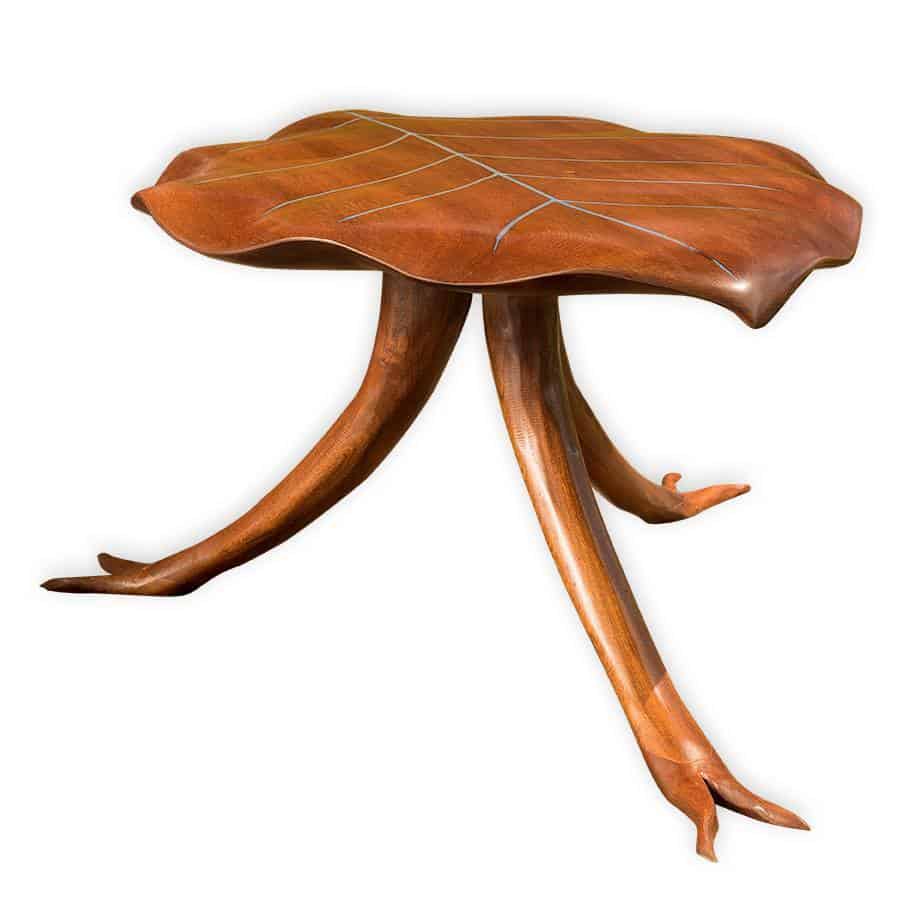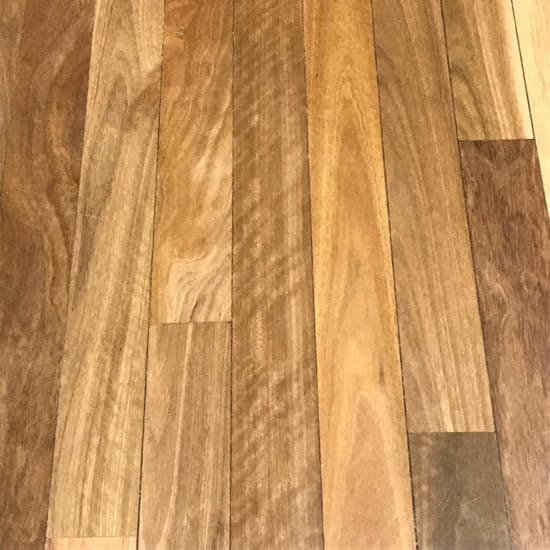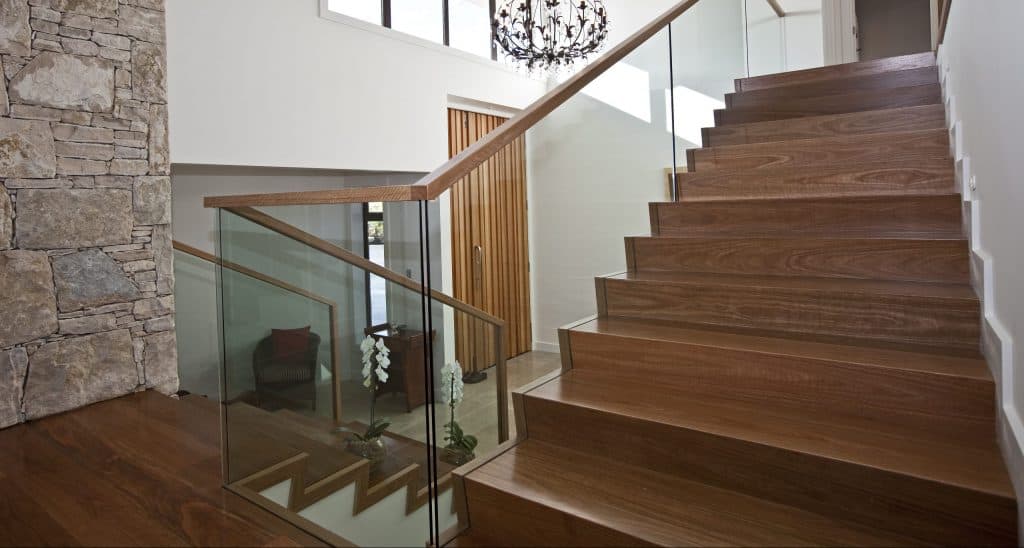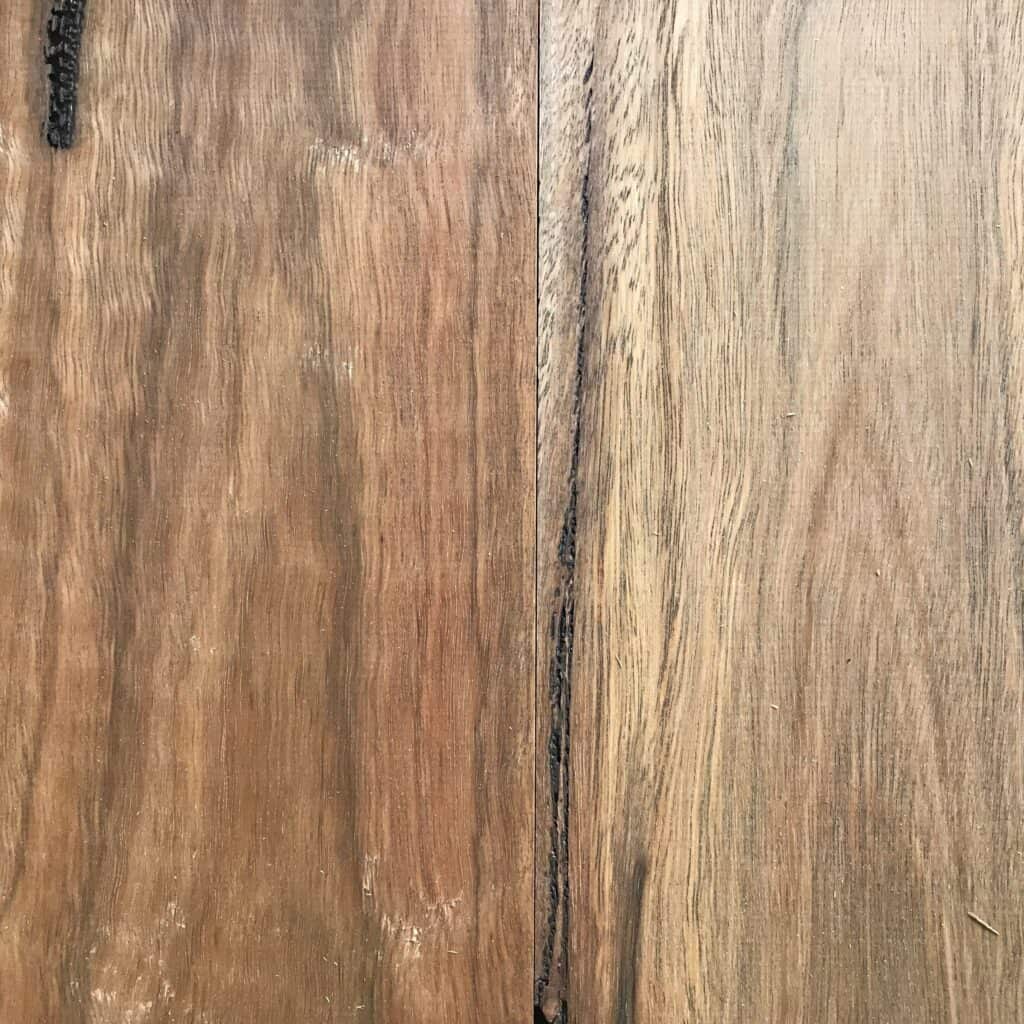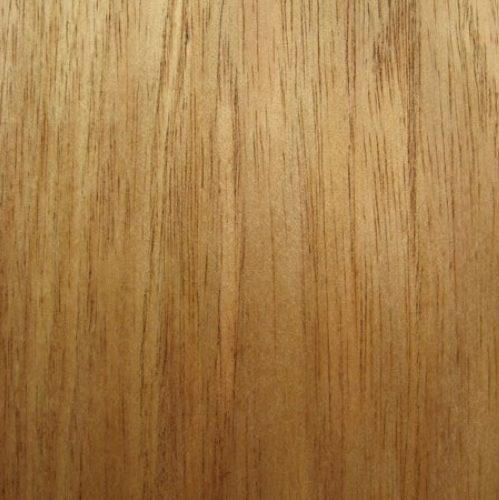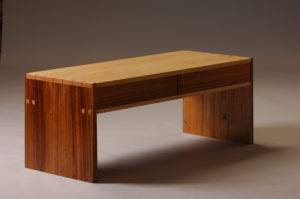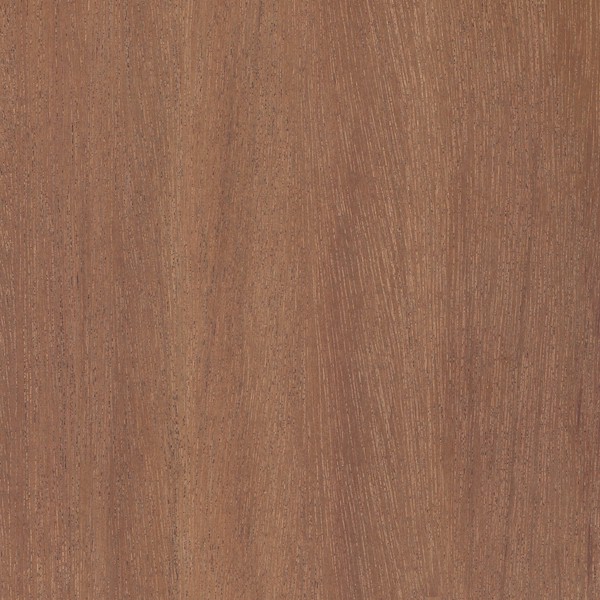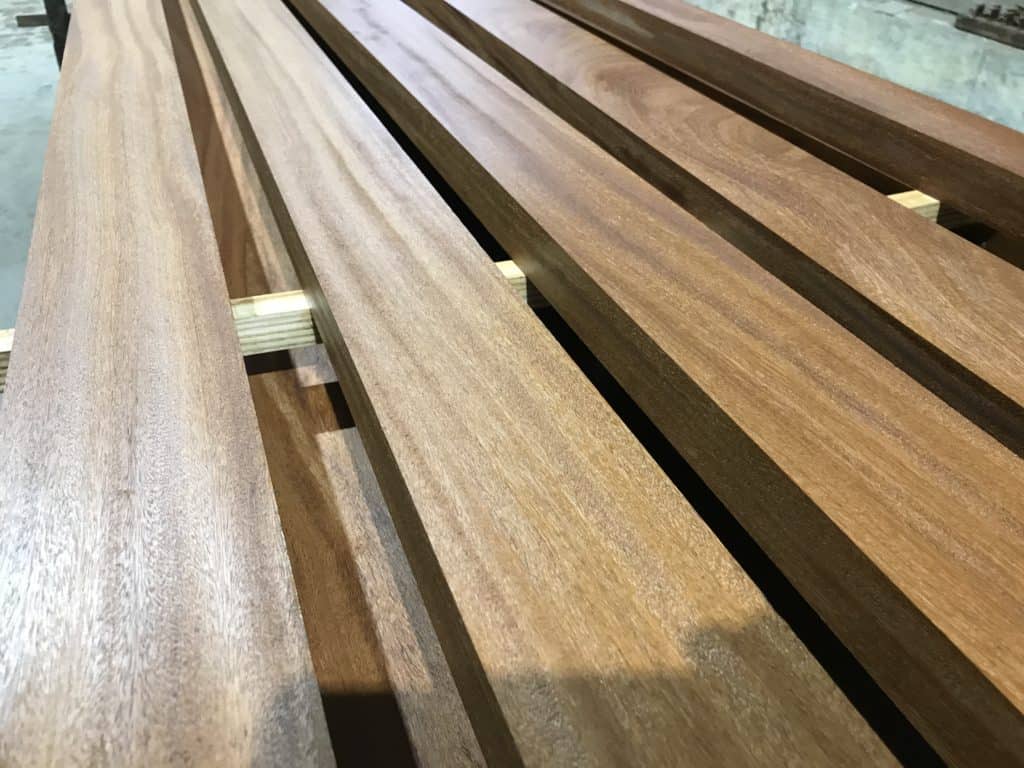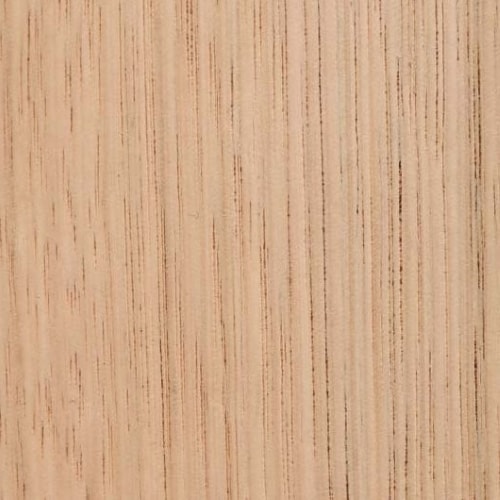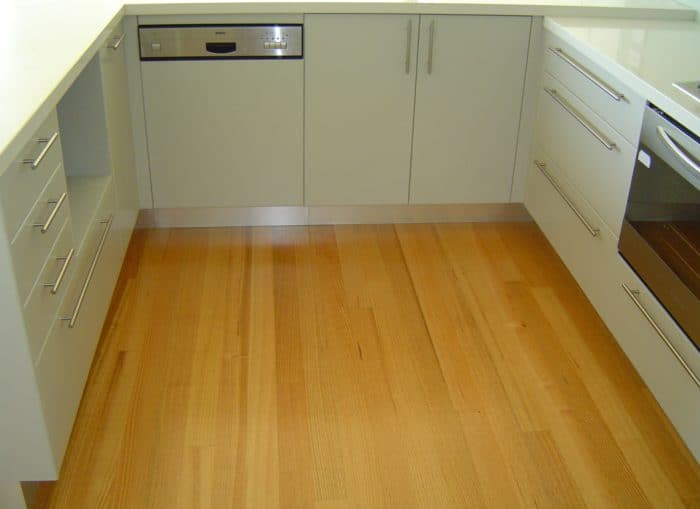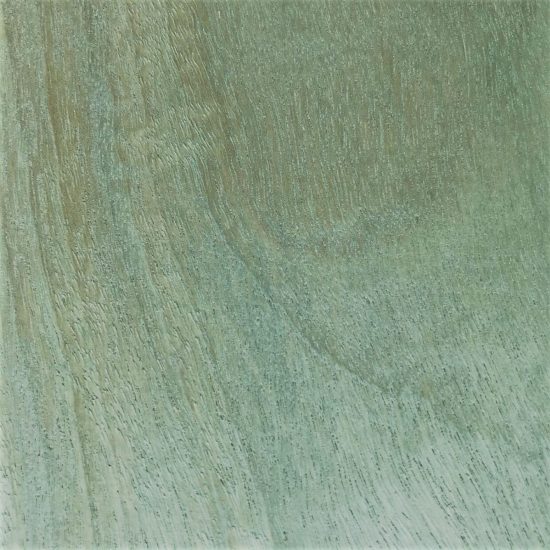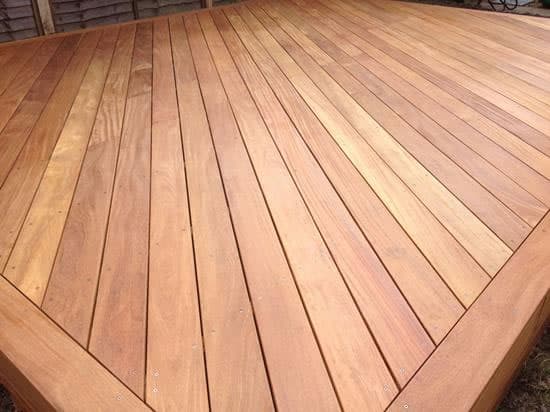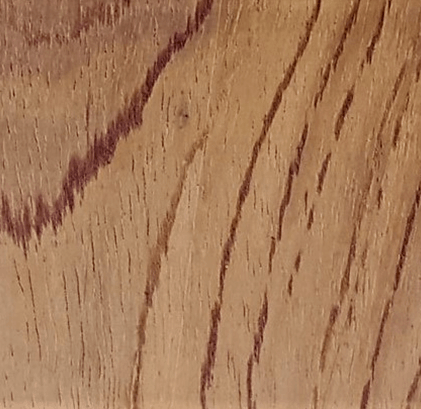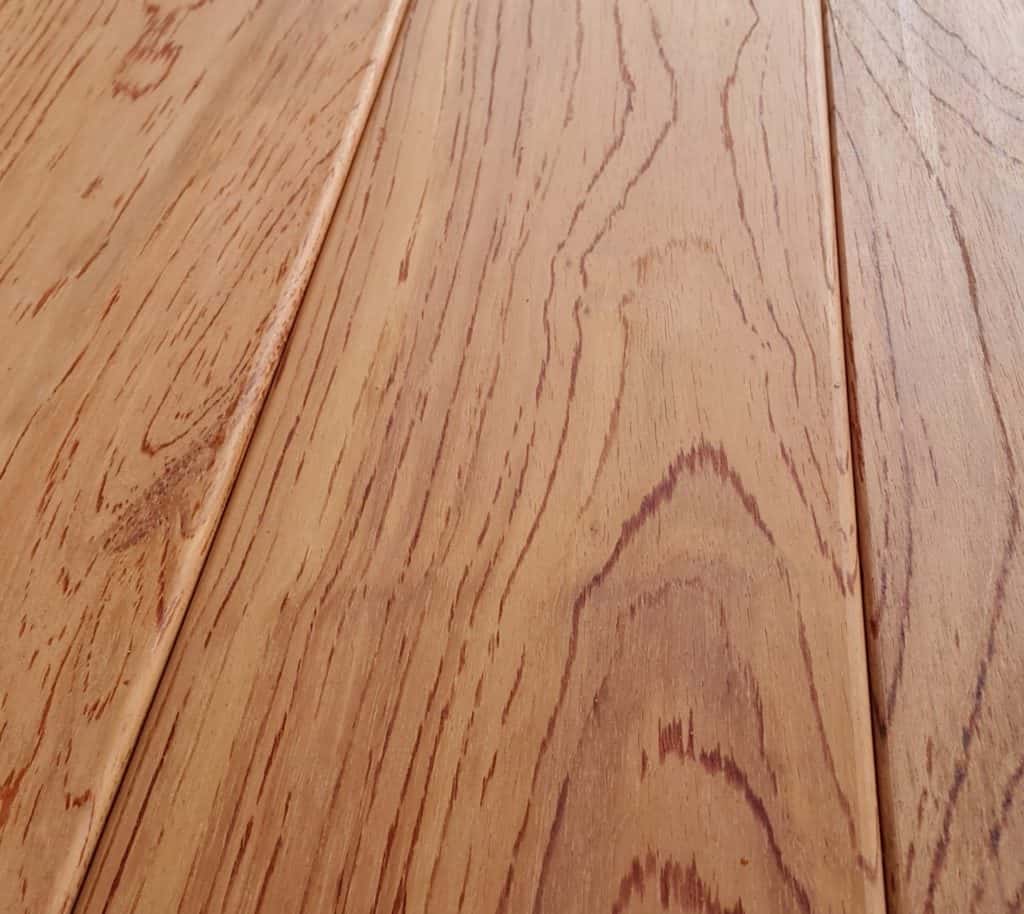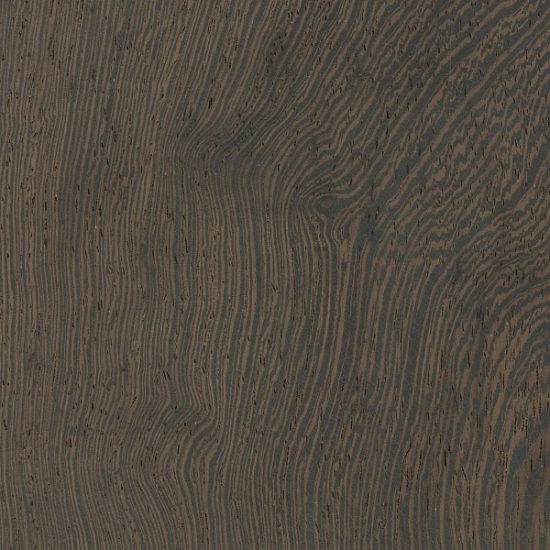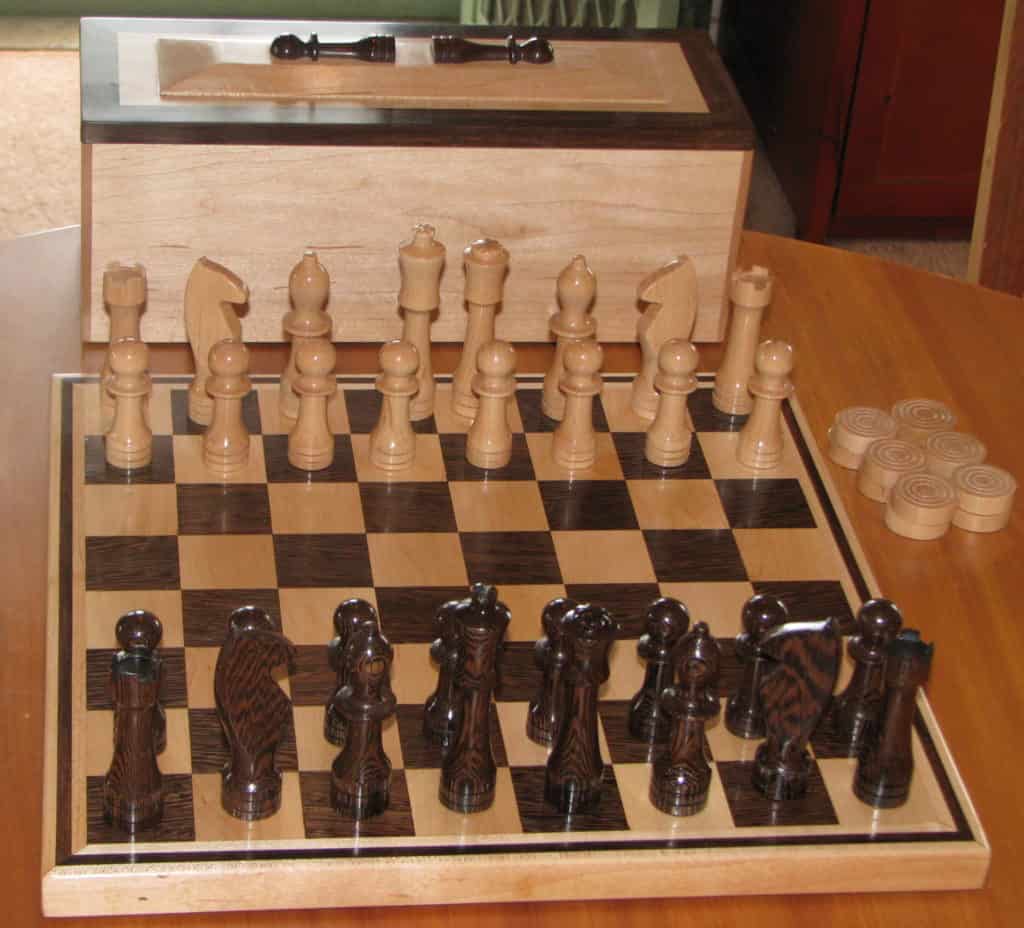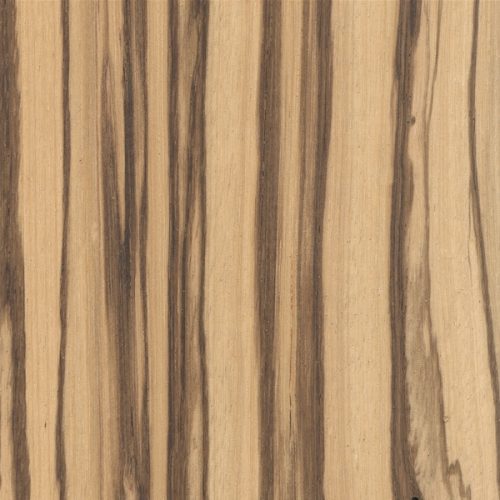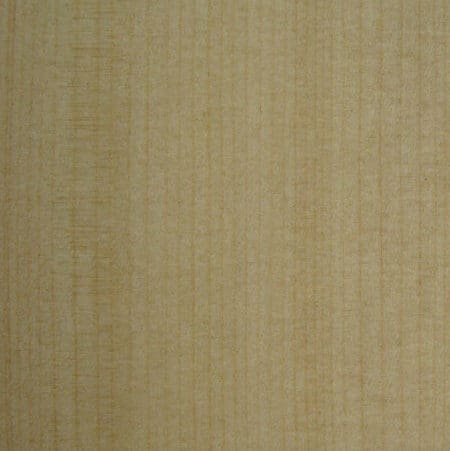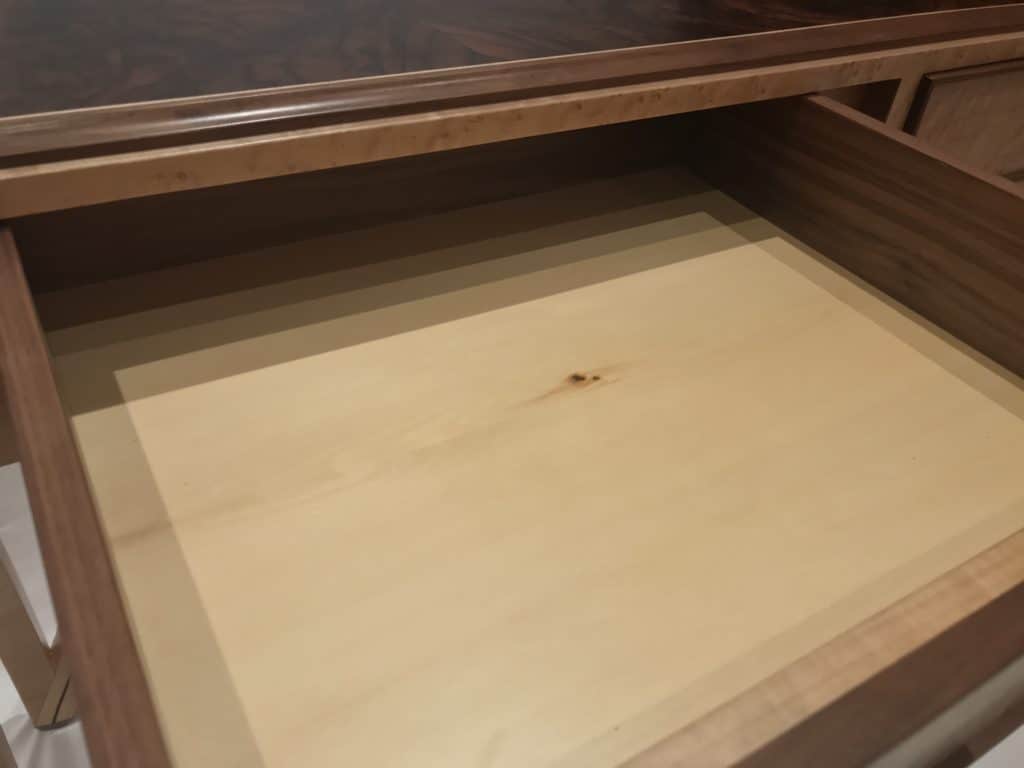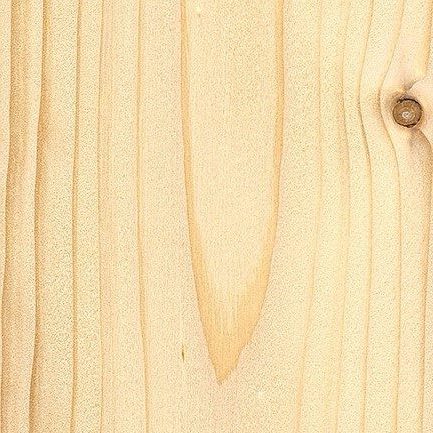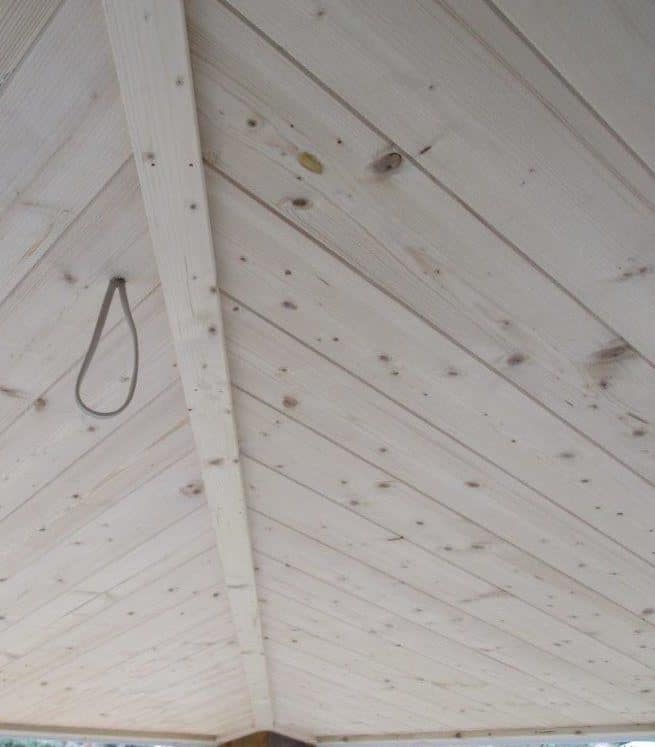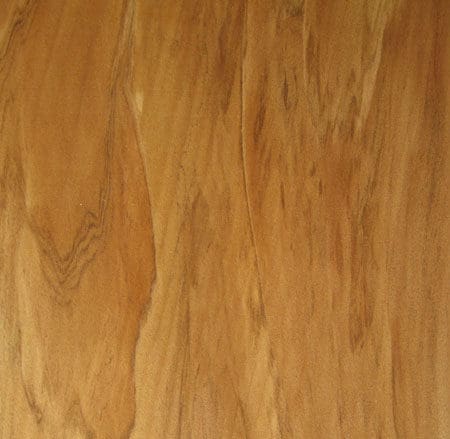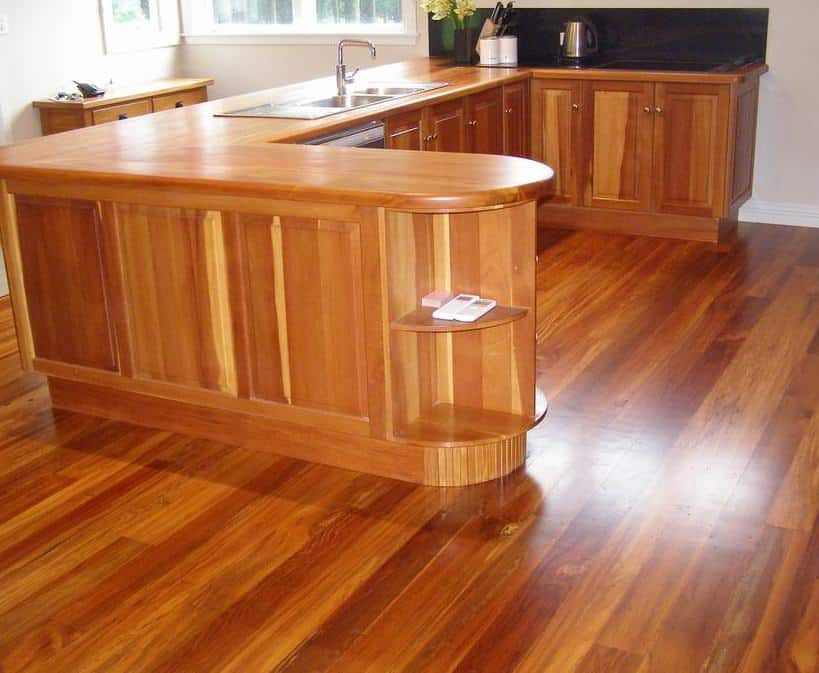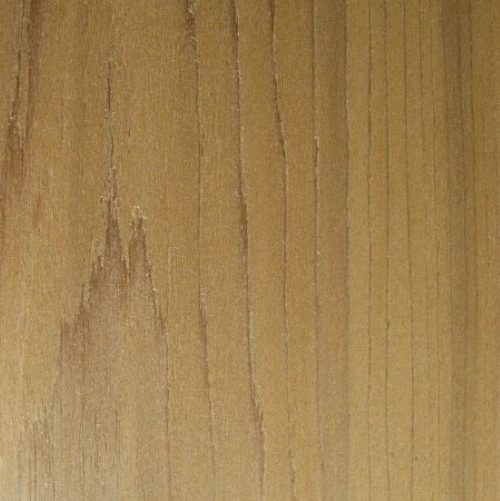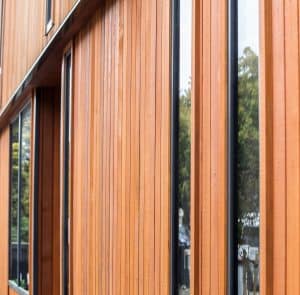Timber Species
Comprehensive range of NZ native and exotic timbers
When you’re looking for high quality solid wood that’s hardwearing and looks great, we’re your specialists in NZ native and exotic timbers.
From structural timbers to mouldings, hardwood floors to boat decking, we supply a comprehensive range of hardwood or softwood timber species chosen for their ability to perform well in NZ’s climate. We source all our timber from sustainably managed forests, inspecting all timber at place of production and again upon arrival at our yards.
With over 30 species in stock choose the timber that suits your project. Quality is important to us, so we supply a comprehensive range of NZ natives such as Kauri, Rimu and Matai, and all the popular exotic species such as American Black Walnut, Cherry, American White Oak & American Hard Maple.
Hardwoods
-
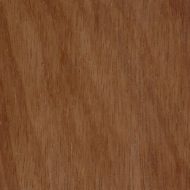
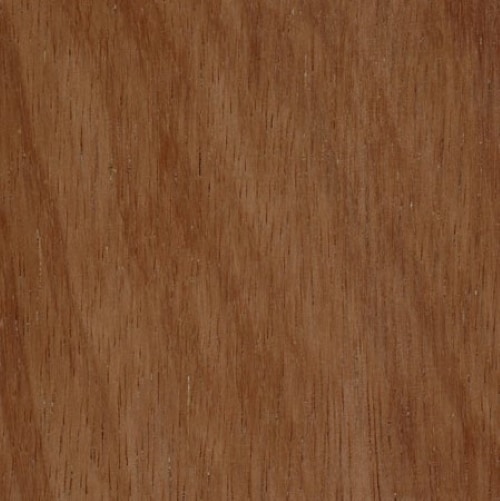
Akwa
Durability: Low Durability
Colour: Medium
Sizes available: Not AvailableTrade Name: Taun Botanical Species: Pometia pinnata Other Names: Akwa, Malugay Country of Origin: Solomon Islands Air Dry Density: 705kgs/m3 Durability: Low Durability Strength: SD4 Seasoning:
Surface checking of backsawn material may occur. Some twist may occur, but can be reduced by final steaming treatments although this may accentuate checking.Characteristics:- The sapwood is approximately 2 inches wide, a pale brown colour with an orange tinge.
- The heartwood is moderately hard and heavy, usually pinkish in colour, occasionally red and streaky, but turning brown with age.
- It is lustrous but lacks a distinct figure and the texture is intermediate and uneven.
- The grain is normally straight and fissile, or slightly interlocked, but severe spiral grain can occur.
- In hardness the timber is comparable with European Oak.
Working Qualities:
- Not usually difficult to saw or machine.
- Some radial surfaces may be slightly roughened by interlocked grain.
- There is no difficulty in gluing, nailing, varnishing or painting seasoned timber, but for a good painted finish a filler is desirable.
Uses:
- Furniture making and musical instruments.
- Product Attributes:
- Product Limitations:
- Sapwood subject to Lyctus attack.
-
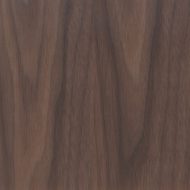
American Black Walnut
Durability: Moderately Durable
Colour: Dark
Sizes available: 25, 40, 50 mmTrade Name: Walnut – American Botanical Species: Juglans nigra Other Names: Black Walnut Country of Origin: U.S.A. & Canada Air Dry Density: 660kgs/m³ Durability: Moderately Durable Strength: SD5 Characteristics: • The wood has a fine even texture but a rather coarse grain. • The colour is a rich chocolate-brown to purplish-black. • The sapwood is pale brown, however with conditioning through steaming the sapwood is coloured to the heartwood shade. Working Qualities: • The timber is moderately hard, tough and strong, however it is easily worked. • It finishes well and takes an excellent polish. Uses: • Fine furniture, high-class joinery, gun stocks, musical instruments. Product Attributes: • Uniform chocolate-brown / black. • Machines well. • Veneers available. • Strong grain figure. • Flat sawn. • Good staining and polishing qualities. Product Limitations: • Quality of timber can have knots in prime boards • Seldom over 3.0m. • No fixed widths. • American grading rules apply. -
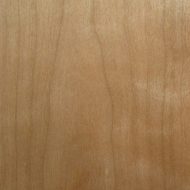
American Cherry
Durability: Moderately Durable
Colour: Medium
Sizes available: 25, 40, 50 mmTrade Name: American Cherry Botanical Species: Prunus serotina Other Names: Black Cherry, American Cherry Country of Origin: U.S.A. Air Dry Density: 580kgs/m³ Durability: Moderately Durable Strength: 6 (on a scale 0f 1 -10) Characteristics: • Fine, straight, close grain timber. • The heartwood varies in colour from reddish-brown to rich red. • The sapwood is yellow. • Fine yellow, narrow brown coloured pith flecks and small gum pockets are a common feature. • Sawn timber is graded on a one face heart basis. Working Qualities: • Works easily. • Machines and turns well. • Very good polish finish. Uses: • Fine furniture, high class joinery, boat interiors, musical instruments. Product Attributes: • Attractive fine, close grain timber. • Takes stain and polish very well. • Veneers available. • Good machining and turning capabilities. • Colour reddish brown to rich red. Product Limitations: • Random widths. • Face graded for heart content and then generally to a minimum of 75% to 80%. • American grading rules apply. • Fine, narrow brown coloured pith flecks and gum pockets are a common feature. -

American Hard Maple
Durability: Non-durable
Colour: Light
Sizes available: 25, 40, 50 mmTrade Name: American Hard Maple Botanical Species: Acer saccharum Other Names: Hard or Rock Maple Country of Origin: U.S.A. & Canada Air Dry Density: 740kgs/m³ Durability: Non-durable Strength: SD4 Seasoning: Dries well with little degrade. Other content here.
Characteristics: • Hard maple is strong, heavy, hard, straight grained with a fine texture. • The colour is cream with fine red/brown bands. Working Qualities: • Rather difficult to work. • Reduction of cutting angle to 20° assists the finishing operation. • It can be stained, polished and glued satisfactorily but is hard to nail or screw. Uses: • Flooring, high-class joinery, boat interiors, musical instruments and sporting goods. Product Attributes: • Hard strong timber. • Pale cream with fine red / brown markings. • Veneers available. • Straight grained with a fine texture. • Stains and polishes satisfactorily. Product Limitations: • Can be difficult to work. • Random widths. • Hard to nail or screw. • American grading rules appl -

American White Ash
Durability: Non-Durable
Colour: Light
Sizes available: 25, 40, 50, 75, 100 mmTrade Name: Ash Botanical Species: Fraxinus americana Other Names: White Ash, American Ash Country of Origin: U.S.A. Air Dry Density: 670kgs/m³ Durability: Non-durable Strength: 8+ (on a scale of 1 – 10) Seasoning:
Dries well with little degrade. Characteristics: • The sapwood and heartwood are almost white to beige with the heartwood having incidences of dark beige to brown features on occasions. • Well figured with good strength, elasticity, toughness, stiffness and hardness allied to its light weight. Working Qualities: • Machines reasonably well. Good staining and polishing qualities. Uses: • High class joinery,boat interiors, musical instruments and striking tool handles. Product Attributes: • Generally cream to white. • Machines well. • Good strength and toughness / weight ratio. • Veneers available. • Strong grain figure. • Flat sawn. • Good polishing and staining qualities. -

American White Oak
Durability: Durable
Colour: Medium
Sizes available: 25, 40, 50 mmTrade Name: American White Oak Botanical Species: Quercus spp. Other Names: Chestnut Oak Country of Origin: U.S.A. Air Dry Density: 735kgs/m³ Durability: Durable Strength: SD5 Seasoning: The timber seasons fairly slowly with a tendency to check and split. Characteristics: • American White Oak resembles European Oak, being a mixture of species. However it is more variable in colour, pale yellowish-brown to mid-brown. It varies also in quality according to the locality; thus Oak from Canada and the Northern USA is generally harder and heavier than that from the Southern States. • The characteristic silver grain figure, due to the broad rays, is shown to advantage on quarter cut material. • The grain is generally straight and the texture varies from coarse to medium coarse. Working Qualities: • Considering its density, the timber can be worked fairly readily, taking a smooth finish. • The timber can be glued, stained and polished and takes nails and screws well. • In common with other species of Oak, White Oak corrodes metals, particularly iron, steel and lead. • Blue-black discolourations from the tannic acid in the wood are liable to develop when it is in contact with iron or iron compounds under damp conditions and PVA glues. • Use of non-ferrous metals for fastening and fittings is recommended. Uses: • Because of its good all-round strength and resistance to decay, White Oak is used for a wide range of constructional work, including ship and boat building. • It is traditional for high-grade furniture, interior woodwork and flooring. • Because of its impermeability, the timber is suitable for vats and casks for holding liquids such as wine and spirits. Product Attributes: • Pale cream to yellowish brown sometimes with a pink tinge. • Distinctive grain feature. • Takes stain and polish well. • Grain is generally straight with a medium to coarse texture. • Machines and turns well. Product Limitations: • Random widths. • Can corrode iron, steels and lead. • American grading rules apply. -
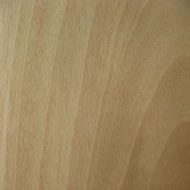
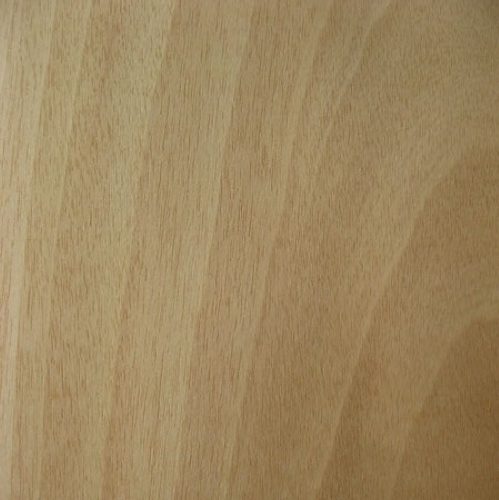
Anegre
Durability: Non-Durability
Colour: Medium
Sizes available: 25, 40, 50 mmTrade Name: Anegre Botanical Species: Aningeria spp. Other Names: English Tawa, African Birch Country of Origin: Ivory Coast Air Dry Density: 550kgs/m³ Durability: Non-durable Strength: 6+ (on a scale from 1 – 10)
Seasoning:Dries easily and well, both in the open and in the kiln, apart from the tendency to blue stain in the early stages of drying.
Characteristics:
- Similar to European Birch.
- No clear distinction between heartwood sapwood.
- Colour varies from whitish to a pale shade of brown, often with a pinkish tinge.
- Fairly plain in appearance although quarter-sawn surfaces sometimes show a growth-ring figure, and where wavy grain is present there is sometimes a mottle figure.
- The grain varies from straight to wavy, and the texture from medium to coarse.
Working Qualities:
- Ease of working is dependent on the amount of silica present and can vary from easy to hard.
- Moderate to severe abrasive action on tools and cutters can be anticipated.
- Tungsten tipped tools are to be recommended in cross-cutting and boring.
- Adequate support is needed to prevent chipping out and care is needed planning in order to obtain a smooth finish.
- It takes and holds nails and screws well, and can be glued, stained and polished.
Uses:
- General utility timber for interior joinery and finishing.
- Produces good veneer.
Product Attributes:
- Colour varies from whitish to a pale shade of brown, often with a pinkish tinge.
- Available in square sections.
- Wide boards available.
- Glues, stains and polishes well.
- Fairly plain in appearance.
- Veneers available.
Product Limitations:
- Presence of silica can be very hard on tool.
- Fixed widths not available.
- Care needed when planning, cross-cutting and drilling to prevent chipping out.
- Colour variations do occur.
-
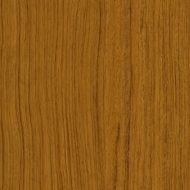
Burmese Teak (FEQ)
Durability: Very Durable
Colour: Dark
Sizes available: 25, 40, 50, 75, 100 mmTrade Name: Teak Burmese Botanical Species: Tectona grandis Other Names: Country of Origin: Burma, Thailand, India
(young plantations are in existence in a variety of countries around the world.)Air Dry Density: 660kgs/m³ Durability: Very Durable Strength: SD6 Seasoning: • Dries slowly but well. Characteristics: • The heartwood is dark golden-yellow darkening with exposure to brown or dark brown. • No clear distinction between heartwood sapwood. • Sometimes figured with dark markings. • Can have a greenish tinge when freshly cut. • The timber is dull with an oily feel and has a unique scent when freshly cut. • The grain varies from straight to wavy depending on origin. • The best teak comes from Burma being generally straight grained and uniformly golden. • The texture is coarse and uneven. Working Qualities: • Although working qualities can be variable, the timber generally works with moderate ease. • It can have a dulling effect on cutters but the timber is capable of a good finish. • It turns well and can be glued, stained and polished. Uses: • Boatbuilding, joinery, furniture and decking. Product Attributes: • Very handsome timber. • Very durable and strong. • Very stable. • Veneers available in crown and quarter cut. Product Limitations: • Very expensive, especially in long lengths. • Sustainability questionable. • Restricted availability -
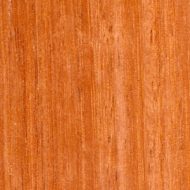
Eucalyptus Saligna
Durability: Moderately Durable
Colour: Medium
Sizes available: 25, 50 mmTrade Name: Saligna Botanical Species: Eucalyptus saligna Other Names: Sydney Blue Gum Country of Origin: Australia, New Zealand Air Dry Density: 920kgs/m³ Durability: Moderately Durable Strength: SD3 Seasoning: • Difficult to dry as prone to surface checking. Characteristics: • The colour ranges from light to dark pink. • The grain is usually interlocked, occasionally straight. • The texture is coarse. • To facilitate drying the timber is always quarter sawn. Working Qualities: • The timber works fairly well but it is rather difficult to obtain a smooth surface unless the cutting angle is reduced to 20°. • It nails and screws fairly well. • Stains and polishes reasonably well. Uses: • Joinery and construction. Product Attributes: • Light pink to dark pink. • Good lengths available. • Veneers available. • Machines reasonably well with care. • Takes stains and polishes well. • Fixed widths. Product Limitations: • Variable in colour. • Grain usually interlocked with a coarse texture. -
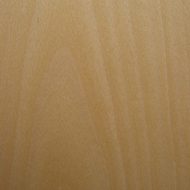
European Beech
Durability: Non-durable
Colour: Light
Sizes available: 25, 40, 50 ,80 mmTrade Name: Beech – European Botanical Species: Fagus sylvatica Other Names: English, Danish, German, etc., Beech according to origin. Country of Origin: European countries Air Dry Density: 690kgs/m³ Durability: Non-durable Strength: SD4 Seasoning: • Dries fairly rapidly but tends to warp, twist, check and split. • Steaming which reduces the tension in the timber is normally introduced. • This process however colours the timber to pink / red. Characteristics: • No clear distinction between heartwood and sapwood by colour, which varies from cream to pink / red depending on the amount of steaming the timber is given. • The wood is typically straight grained with a fine even texture but varying in density according to the locality of growth. Working Qualities: • Works well and is capable of good smooth surfaces. Good turning and bending properties. Uses: • General utility timber for interior joinery, finishing and cabinetmaking. • Used extensively in Europe for domestic woodware, tool handles and flooring. • Produces good veneer. Product Attributes: • Consistent colour, pale pink. • Machines and turns well. • Good bending properties. • Straight grained with a fine even texture. • Stains and polishes satisfactorily. • Veneers available. Product Limitations: • Will discolour to pale yellow with time. • Graded similar to American standards. • Generally narrow with no fixed widths. • Lengths seldom above 3.0m. -
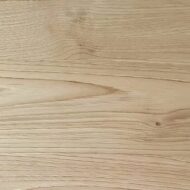
European Chestnut
Durability: Durable
Colour: Light
Sizes available: 23 & 50mmTrade Name: Chestnut Botanical Species: Castanea sativa Other Names: Sweet Chestnut, Spanish Chestnut Country of Origin: France Air Dry Density: 590 kg/m3 Durability: Durable Strength: SD5 Colour and Appearance
Heartwood is a light to medium brown, darkening to a reddish brown with age. Narrow sapwood is well-defined and is pale white to light brown.Characteristics:
Fine, straight, to Spiral or interlocked.Endgrain:
Ring-porous; 2-4 rows of large, exclusively solitary early-wood pores, numerous small latewood pores in dendritic arrangement; tyloses common; growth rings distinct; rays not visible without lens; apotracheal parenchyma diffuse-in-aggregates (short lines between rays).Working Qualities:
Overall easy to work with both hand and machine tools.
Chestnut splits easily, so care must be taken in nailing and screwing the wood. Due to its coarse texture, turning is mediocre. Glues, stains, and finishes well.Uses:
Fine furniture, high class joinery, Flooring, musical instruments.Product Attributes:
Attractive fine, close grain timber.
Takes stain and polish very well.
Good machining and turning capabilities.Product Limitations
Random widths -
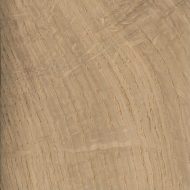
European French Oak
Durability: Durable
Colour: Medium
Sizes available: 27, 40, 54, 80 mmTrade Name: English Oak, French Oak, Polish Oak etc. according to country of origin. Botanical Species: Quercus robur, Quercus petraea Other Names: Rovere, Quercia (Italy),
Chêne (France),
Eiche (Germany),
Eik (Netherlands)Country of Origin: Romania, Yugoslavia, Poland. Air Dry Density: 720kgs/m³ Durability: Durable Strength: SD4 Seasoning: - It dries very slowly with a tendency to split and check
- Medium movement in service
Characteristics: - The heartwood is light tan to biscuit coloured, usually straight grained but irregular or cross-grained material can occur depending on growth conditions
- Characteristic silver grain figure on quartered surfaces due to broad rays
Working Qualities: - There is moderate to severe blunting effect on cutters, which should be kept sharp
- Quartered stock requires a 20° planning and moulding angle
- The wood takes waxing, liming, fuming and polishing treatments well
Uses: - The preponderance of tyloses in the pores of “White Oaks” resists passage of liquids and renders the wood ideal for tight cooperage for cognac, wine and beers
- For furniture and cabinetmaking
- English Oak is best for boatbuilding, dock and harbour work, sea defences, railway wagons, ladder rungs, sills thresholds, and for all purposes of exposure in contact with the ground
- High-class joinery, coffins, ecclesiastical work such as pews, rood screens, pulpits and carving
- Flooring, vehicle body bearers and floors in trucks
Product Attributes: Veneers available -

Garapa
Durability: Durable
Colour: Medium
Sizes available: 50mm 100- 300 mm wideTrade Name: Garapa Botanical Species: Apuleia Leiocarpa Other Names: Grapia, Muirajuba Country of Origin: South America Air Dry Density: 820 kg/M3 Durability: Durable Strength: SD1 Seasoning:
As the wood weathers, it takes on light silvery gray tones. This natural process can be inhibited by using a sealer to keep its natural colour.
Characteristics:
Garapa has a golden to yellowish brown colour, which darkens with age. The wood is fairly chatoyant and appears to shift from dark to light colouring in different lighting angles.
Working Qualities:
Garapa is fairly easy to work, despite its density. Glues and finishes well, and is about average for dimensional stability.
Uses:
Flooring, decking, dock, and boatbuilding
Product Attributes:
- Durable timber.
- Yellow brown timber, darkening with age.
- Machines well with care.
- Grain is usually straight, but can also be interlocked. Uniform medium texture with a moderate amount of natural luster.
- Rated as durable, though vulnerable to termites and other insect attacks.
- No characteristic odor.
-
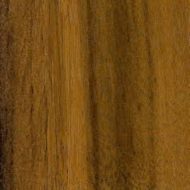
Greenheart
Durability: Very Durable
Colour: Medium
Sizes available: 50, 75, 100, 150, 200 mmTrade Name: Greenheart Botanical Species: Ocotea rodiaei Other Names: Sipiroe Country of Origin: Tropical South America, Guyanas Weight: Weight about 1030kgs/m³
(64lb/ft³) seasoned
averaging 860kgs/m³ (54lb/ ft³)
Specific gravity .86Durability: Very Durable
Almost immune to decay and termites.
Extremely resistant to preservative treatment.Strength: SD1 Seasoning: • Slow to season with a risk of splitting. • Moves moderately once dry. Characteristics: • Light greenish yellow to dark olive-green, sometimes marked with brown or black streaks. • Sapwood pale yellow in colour, shading gradually into the heartwood. • Texture fine and even. • Grain straight or interlocked. • Bole 50-80 ft long, cylindrical, diameter 20-35 inches. Working Qualities: • Easily sawn, in spite of a slight blunting effect. • Turns well. • Planning is not difficult despite the high density of the wood and interlocked grain. • Easy gluing. • Pre-boring is recommended for nails and screws. • Good nail holding • Staining rarely necessary. • Polishes satisfactorily. Uses: • A very heavy hard timber, suitable for use under exacting conditions. • Outstanding in most of its strength properties. • Available in very large sizes and long lengths, and is therefore suitable for piling, piers, lock gates, dock and harbour work. • Useful for pier decking and hand rails, flooring and in engineering industry as bearers for engines. • Gives good service in chemical plants for vats, filter press plates and frames. • Suitable for joinery in both exterior and interior situations and used also for fishing rods and as centre laminates for longbow and general construction. -

Ipe ( Brazilian Walnut )
Durability: Very Durable
Colour: Reddish Brown
Sizes available: 140x19Trade Name: Ipe Botanical Species: Handroanthus spp. Other Names: Brazilian Walnut, Lapacho Country of Origin: Central – South America Air Dry Density: 1100 kg M3 Durability: Very Durable Strength: SD 1 Colour & appearance:
Heartwood can vary in color from reddish brown to a more yellowish olive brown or darker blackish brown; sometimes with contrasting darker brown/black stripes. In certain species, there are powdery yellow deposits within the wood. Ipe can be difficult to distinguish visually from Cumaru, another dense South American timber, though Ipe tends to be darker, and lacks the subtle yet characteristic vanilla/cinnamon scent while being worked.
Grain & Texture:
Has a fine to medium texture, with the grain varying from straight to irregular or interlocked. It has a moderate natural luster.
Working Qualities:
Overall, Ipe is a difficult wood to work, being extremely hard and dense, with high cutting resistance during sawing. Ipe also has a pronounced blunting effect on cutting edges. The wood generally planes smoothly, but the grain can tear out on interlocked areas. Also, Ipe can be difficult to glue properly, and surface preparation prior to gluing is recommended. Straight-grained wood turns well, though the natural powdery yellow deposits can sometimes interfere with polishing or finishing the wood. Ipe has a mild scent while being worked.
Rot Resistance:
Rated as very durable; excellent insect resistance, though some species are susceptible to marine borers. Superb weathering characteristics. (Ipe was used for the boardwalk along the beach of New York City’s Coney Island, and was said to have lasted 25 years before it needed to be replaced: an amazing lifespan given the amount of traffic and environmental stresses put upon the wood.)
Uses:
Flooring, decking, exterior timber, tool handles, and other turned objects
Product Attributes:
· Very Durable timber.
· Reddish brown timber, darkening with age.
• This wood species is not listed in the CITES Appendices or on the IUCN Red List of Threatened Species.
· Rated as Very Durable, excellent insect resistance though some species are susceptible to marine borers.
· Sold as a Decking
-
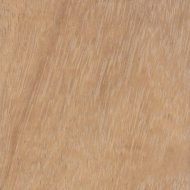
Iroko
Durability: Durable
Colour: Medium
Sizes available: 25, 40, 50, 80 mmTrade Name: Iroko Botanical Species: Chlorophora excelsa Other Names: Odum Country of Origin: West Africa Air Dry Density: 655kgs/m³ Durability: Durable Strength: SD6 Seasoning: • Requires reasonable care in kiln drying to avoid degrade. Characteristics: • It is variable in colour from yellow to fairly dark brown. • Grain is typically interlocked. • Texture is medium to coarse and even. • It has neither taste nor odour. • Darkens with age. Working Qualities: • Works with moderate ease with most hand and machine tools and finishes well. • Stone-like calcareous deposits are sometimes present and these may cause damage
to cutting edges.• In planning quarter sawn material the cutting angle should be reduced to 15°
to avoid picking-up the grain.• It nails, screws, and glues well. • Although requiring a grain filler the wood takes stain well and gives good results with polish. • It can be cut into veneer and it has moderate steam-bending qualities. Uses: • It is suitable for high grade joinery, interior fittings, window frames, doors, staircases, heavy furniture and laboratory benches, bank and shop fittings, boat and vehicle building, wagon work and flooring. • It is also suitable for piling, dock and other constructional work Product Attributes: • Durable utility timber. • Yellow brown timber, darkening with age. • Veneers available. • Machines well with care. • Takes stains and polish well but may need grain filling. Product Limitations: • Stone like calcareous deposits, which are sometimes present can cause tool damage. • Fixed widths not available. -

Jarrah
Durability: Very Durable
Colour: Dark
Sizes available: 25, 40, 50 mmTrade Name: Jarrah Botanical Species: Eucalyptus marginata Country of Origin: Australia (Western) Air Dry Density: 820kgs/m³ Durability: Very Durable Strength: SD4 Seasoning: Seasons readily by air or by kiln drying although there can be some warping due to sloping grain and some care is required to prevent checking in wide boards. Characteristics: A large tree producing light to dark red timber darkening to a uniform red brown mahogany. Working Qualities: • It machines, nails and glues well, takes an excellent polish and holds paint very well. • It is also prized as carving timber. Uses: • One of the world’s most durable timbers and highly resistant to fire, termite and marine borer attack and impervious to acids. • Jarrah has a very wide range of uses, previously regarded as a heavy construction timber for bridges and wharves it is now favoured for interior finishing, joinery, cabinet-making and flooring. Product Attributes: • Pink to dark red brown in colour. • Strong, durable timber. • Stains and polishes well. • Available in fixed widths. • Even, medium coarse texture with fairly straight grain. • Veneers available. Product Limitations: • Variable in colour. • Can be subject to small dark fungal markings. • Prone to gum pockets and veins. • It can be hard to work with machine tools -

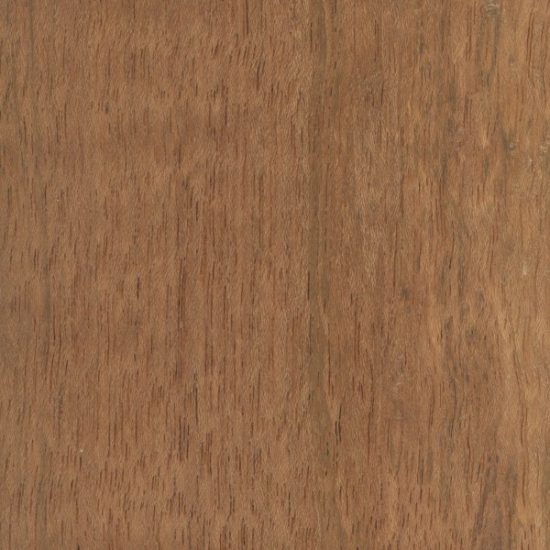
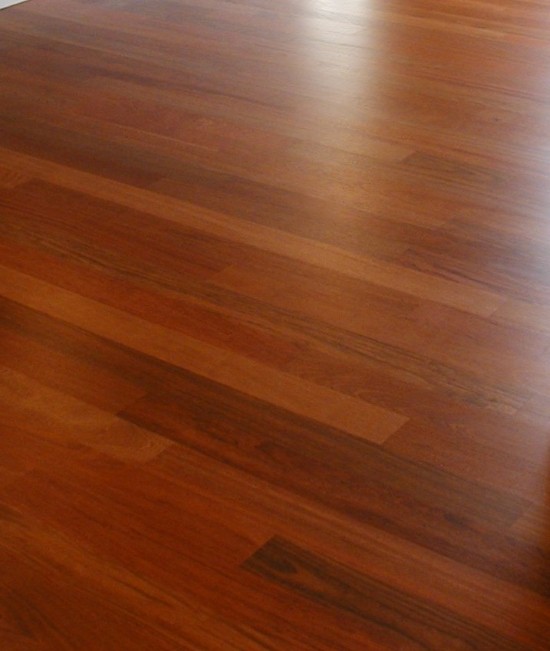
Jatoba
Durability: Durable
Colour: Dark
Sizes available: 25mmTrade Name: Jatoba Botanical Species: Hymenaea courbaril Other Names: Locust, Courbaril Country of Origin: Central and South America, West Indies Air Dry Density: 910kgs/m³ Durability: Durable Strength: SD2 Seasoning: • Rather difficult to dry, tends to be rapid with moderate surface checking and warping and a liability to case harden. • Slow drying will overcome these tendencies. • There is small movement in service. Characteristics: • The heartwood is salmon red to orange brown, marked with dark brown and russet brown streaks. • The wood has a golden lustre. • The grain is commonly interlocked with a medium to coarse texture. Working Qualities: • Moderately difficult to work because of its high density. • It nails badly but has good screw holding, glues well. • It has a moderate blunting effect on tools which must be kept sharp, and a reduced cutting angle of 20° will provide a smooth finish on the interlocked grain. • The wood stains well but does not take a high polish. Uses: • Furniture, cabinet making, joinery and turnery. • Its high shock resistance makes it ideal for tool handles and sports goods, excellent for flooring, stair treads, ship planking, gear cogs, wheel rims, looms, general building construction. • Used for steam bent boat parts in place of oak. • Lock gates in waters free from marine borers. • Second growth timber has a wide sapwood of a grayish-pink colour which is sliced for decorative veneers for panelling and furniture. • Decking Product Attributes: • Very strong, hard and tough. • Very good bending classification. • Very resistant to termites. • Veneers available. Product Limitations: • Nails badly. • Does not take a high polish. -
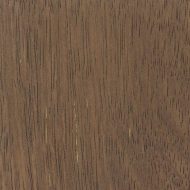
Kwila
Durability: Very Durable
Colour: Dark
Sizes available: 25, 40, 50, 75, 100 mmTrade Name: Kwila Botanical Species: Intsia spp. Other Names: Merbau (Malaysia), Vesi (Fiji) Country of Origin: Papua New Guinea Air Dry Density: 870kgs/m³ Durability: Very Durable Strength: SD2 Seasoning: • The timber dries slowly without appreciable degrade but if submitted to rapid drying conditions, there is a definite tendency for end splitting and surface checking to occur. • It has a low shrinkage factor. Characteristics: • The heart wood is yellow-brown, brown or dark red, red-brown, turning to a dark red-brown
with age.• The wood is hard and heavy, the texture is moderately coarse but even and the grain may be straight or interlocked and is often wavy. • Sulphur-yellow and dark coloured deposits are characteristic of the species and can be commonly seen in the vessel cavities. Working Qualities: • Saws well, however with the fairly high incidence of gum, saws tend to become clogged. • It planes well but there is a tendency for the grain to tear out in quarter-sawn material. • A reduction in the cutting angle to 20° is beneficial. • The wood tends to split when nailing but holds screws well and can be stained and polished reasonably well, however patches of oil that exude may affect the finish. • The yellow deposits are soluble in water and the dye produced does stain. • If early attention is given to any staining it can generally be removed by scrubbing with milk or lactic acid. Uses: • A very good heavy construction timber. • Ideally suited for decking and outdoor furniture. • It is also used in internal joinery and flooring, striking tool handles and carving. Product Attributes: • Yellow brown timber which will turn red brown with age. • Long lengths available. • A very strong, durable, stable timber. • Fixed widths available. • Veneers available. Product Limitations: • Does leach when in contact with water. • Care needed when machining. • Care needed when staining, polishing and gluing due to natural resins. -

Purpleheart
Durability: Very Durable
Colour: Dark
Sizes available: 50, 75, 100, 150, 200 mmTrade Name: Purpleheart Botanical Species: Peltogyne species Other Names: Amaranth, Violet Wood (USA),
Koroboreli, Saka, Sakavalli (Guyana),
Purpleheart (Surinam), Pau Roxo, Nazareno, Morado (Venezuela),
Tananeo (Columbia)Country of Origin: South America. Weight: Weight varies from 800-1000kg/m³
(60-63lb/ft³) averaging 860kgs/m³ (54lb/ ft³).Durability: Very Durable Strength: SD1 Seasoning: • Dries fairly rapidly with little degrade. • But care is needed to dry out the centre of thick pieces. • Air drying is slow, with some end and surface checking or case hardening. • There is small movement in service. Characteristics: • The heartwood is a deep purple-violet colour when freshly cut, maturing to dark brown. • The original colour is restored when re-cut. • Straight grained, but often irregular, wavy and sometimes interlocked, producing a pleasing striped figure on quartered surfaces. • Texture moderate to fine. Working Qualities: • It is rather difficult to work, with moderate to severe blunting effect on tools. • It exudes gummy resin when heated by dull cutters and the material is best run slowly through machines equipped with high speed steel knives. • The wood turns well and smoothly. • Pre-bore for nailing, glues without difficulty and stains and wax polishes easily. • Spirit finishes remove the purple colour. Uses: • Although expensive, it is used for heavy constructional work, bridge building, fresh water piling, dock work, cladding, house construction and vats. • Excellent for flooring and very suitable for gymnasium equipment, shafts, tool handles, boat building, turnery, furniture and billiard tables. • Also as decorative veneers for inlaying and marquetry work etc. • Best colour from sawcut as steaming affects the soluble phonicoin content. Product Attributes: • Large sizes available. • No bleeding of stain. -
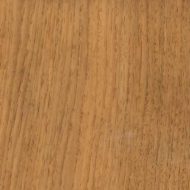
Rosewood (PNG)
Durability: Durable
Colour: Dark
Sizes available: 25,40 & 50 mmTrade Name: Rosewood Botanical Species: Ptercarpus indicus Other Names: Country of Origin: Solomon Islands Air Dry Density: 565kgs/m³ Durability: Durable Strength: SD4 Seasoning: • It is a very stable timber and seasons well with little or no degrade, but care should be taken (as with all island species) not to dry the timber too fast, when distortion and checking can occur. Characteristics: • Variable, but generally a red brown to blood red colour. Sapwood is white to pale yellow. • Grain is interlocked and sometimes wavy, with a moderately coarse and uneven texture. • Quarter sawn material has distinct ribbon figure while the back sawn boards produce a flame-like figure. • The timber is naturally lustrous. • Although a handsome timber, it has neither the density nor the depth of colour of the Rosewood found in South America or India. Working Qualities: • The timber is readily converted and works well with both machine and hand tools. • It is capable of taking a very high polish. Uses: • Furniture, veneer, cabinet work, rifle butts, panelling, musical instruments and knife handles. Product Attributes: • Veneers available. Product Limitations: • Large variations in colour. -
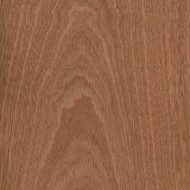
Sapele Mahogany
Durability: Durable
Colour: Dark
Sizes available: 25, 40, 50, 75 mmTrade Name: Sapele Botanical Species: Entandrophragma cylindricum Other Names: Sapele Mahogany Country of Origin: West Africa Air Dry Density: 640kgs/m³ Durability: Durable Strength: SD5 Seasoning: • Requires care in kiln drying to avoid distortion and degrade. Characteristics: • The wood is medium hard and medium weight. • Planed surfaces are mildly lustrous. • The heartwood is pinkish-red when freshly cut, darkening to a rich red-brown. • The most striking feature is the double spiral grain which produces a very regular stripe or rose figures in quarter sawn material. • The texture is fine and even and there is a pronounced cedar-like smell when freshly cut. Working Qualities: • Saws easily and cleanly with little waste and works fairly easily with hand and machine tools although the interlocked grain may be troublesome in planning and moulding. • To eliminate picking up quarter sawn material, the cutting angle should be reduced to 15°. • Takes nails and screws and glues well. • It takes a high polish. Uses: • Gifted with both strength and appearance, the timber has a wide range of uses. • It is used for furniture, paneling, shop and window fittings, high class interior joinery and all general cabinet working purposes, including boat building. • Widely used for decorative veneering, it is often sliced to show the narrow ‘pencil’ stripe which is a characteristic of the species. • It is also used for rotary cut plywood. Product Attributes: • A pinkish red to dark rich red brown timber. • Stains readily and takes an excellent polish. • Veneers available. • It is fairly close textured with interlocked grain. • Machines well with care. • Quarter sawn timber produces a regular striped effect. -
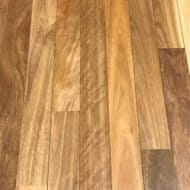
Spotted Gum
Durability: Durable
Colour: Medium
Sizes available: 150x25mm & Flooring 130x19Trade Name: Spotted Gum Botanical Species: Eucalyptus Maculata Other Names: Irongum Country of Origin: Australia Air Dry Density: 1030 Durability: durable Strength: SD2 Characteristics:
Spotted gum heartwood varies between light brown and dark red-brown with grey tinges. The grain is moderately textured and variable. The timber machines and finishes well and the wavy grain can produce an attractive fiddle back figure. The timber is hard, durable and highly resistant to decay.Working Qualities:
The timber machines and finishes well and the wavy grain can produce an attractive fiddle back figure.
Uses:
Heavy construction, power line cross arms, tool handles and ladder rungs. It has a special application in boatbuilding for boat ribs because of its bending qualities. As a kiln dried product it is also used for flooring.
Product Attributes:
- Brown to reddish, dark brown light streaks and gum vein
- Attractive grain
- Machines and turns reasonably well
- Stains and polishes well
- Veneers available.
Product Limitations:
- Gum vein pockets
- Mix colour variation.
-
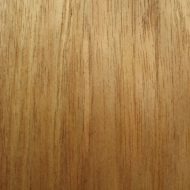
Tasmanian Blackwood
Durability: Durable
Colour: Dark
Sizes available: 25, 50 mmTrade Name: Blackwood – Tasmanian Botanical Species: Acacia melanoxylon Other Names: Blackwood Australian Country of Origin: Australia Air Dry Density: 670kgs/m³ Durability: Durable Strength: SD4 Seasoning: • Dries fairly easily and without undue degrade, although there is some tendency to cupping. Characteristics: • The heartwood ranges in colour from a lustrous golden-brown to reddish-dark brown with a fairly dark brown zone marking the growth rings. • The grain is usually straight but may be interlocked or wavy and the texture is medium and even. • The wavy grain produces a beautiful fiddle-back figure. Working Qualities: • The timber works fairly easily but cutting edges must be kept sharpened for end grain working. • A reduction of cutting angle to 20° is usually beneficial in planning and moulding, particularly when curly grain is present. • It can be screwed and nailed well but gluing properties are often variable. • It finishes well and takes an excellent stain and polish. Uses: • Fine furniture, shop fitting, cabinets, gun stocks, musical instruments and decorative veneer. Product Attributes: • Golden brown to reddish, dark brown. • Attractive grain. • Machines and turns reasonably well. • Stains and polishes well. • Veneers available. Product Limitations: • Short lengths and narrow widths. • Wide colour variation. -

Tonka
Durability: Very Durable
Colour: Medium
Sizes available: 50mm, 100- 300 mm wideTrade Name: Tonka Botanical Species: Dipteryx odorata Other Names: Cumaru, Shihuahuaco Country of Origin: South America Air Dry Density: 1085 kg/m3 Durability: Very Durable Strength: S1 Description:
Heartwood tends to be a medium to dark brown, sometimes with a reddish or purplish hue; some pieces may have streaks of yellowish or greenish brown .Lustre is low to medium. Grain is interlocked, with a medium texture and a waxy feel.Rot Resistance:
Cumaru has excellent durability and weathering properties. The wood is rated as very durable regarding decay resistance, though it may be susceptible to some insect attacks.Working Qualities:
Tends to be difficult to work on account of its density and interlocked grain. If the grain is not too interlocked, Cumaru can be surface-planed to a smooth finish. However, the wood contains silica and will have a moderate blunting effect on tool cutters. Due to its high oil content and density, Cumaru can present difficulties in gluing, and pre-boring is necessary when screwing or nailing the wood.Uses:
Flooring, heavy construction, docks, railroad ties, bearings, handles, and other turned objects.
Product Attributes:
- Very strong, hard and tough.
- Shock resistant is high
-

Victorian Ash
Durability: Moderately Durable
Colour: Light
Sizes available: 25, 40, 50 mmTrade Name: Victorian Ash Botanical Species: Eucalyptus delegatensis Other Names: Tasmanian Oak, Mountain Ash Country of Origin: Australia Air Dry Density: 660kgs/m³ Durability: Moderately durable Strength: 6+ (on a scale from 1 – 10) Seasoning:
Difficult to dry
Requires a long period of air seasoningCharacteristics:
- The timber is quarter sawn to facilitate drying.
- The colour ranges from light beige to light brown with sometimes a pink tint.
- The grain is usually straight but sometimes interlocked or wavy.
- Such material often produces an attractive fiddle-back figure.
Working Qualities:
- The timber saws and machines well.
- Re-sawing or deep cutting is not recommended.
- Finishes well and can be glued, screwed, stained satisfactory.
Uses:
- Timber for interior joinery , cabinet making and finishing. Great for flooring.
Product Attributes:
- Colour varies from light beige to light brown, often with a pinkish tinge.
- Available in square sections.
- Fixed width boards available.
- Glues, stains and polishes well.
- Long lengths available.
- Veneers available.
Product Limitations:
- Gum steaks are a regular occurrence.
- Colour variations do occur.
-

Vitex
Durability: Durable
Colour: Medium
Sizes available: 50mmTrade Name: Vitex Botanical Species: Vitex cofassus Other Names: Country of Origin: Solomon Islands and Papua New Guinea Air Dry Density: 750kgs/m³ Durability: Durable Strength: 7+ (on a scale of 1 – 10) Seasoning: • Seasons well with little degrade providing stacks are closely spaced. Characteristics: • Cream grey heartwood, with a fine even texture. • Freshly sawn boards have a leathery odour and the timber is greasy to the touch. Working Qualities: • The timber planes and machines well and is easy to cut across the grain. • A good finish can be obtained and it has good bending qualities. • Holds nails well without pre-drilling. Uses: • Decks, rails, cross-arms, bridge and wharf decking, boat-building. Product Attributes: • A strong durable timber. • Machines well with some care. • Fixed widths available. Product Limitations: • Very little character. • No veneer available. • Narrow widths only. • Leaching can occur. -
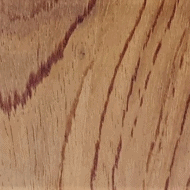
Wallaba
Durability: Very Durable
Colour: Reddish Brown
Sizes available: Decking 140x25, 75 mm RSTrade Name: Wallaba Botanical Species: Eperua falcata Other Names: Apa, Copaibarana, Ituri Wallaba, Bioudou, Bijhout,Uapa,Apazeiro, Espadeira, Wapa, Walapa, Palo Machete Country of Origin: The Guianas Air Dry Density: 928kgs/m³ when air-dry Durability: Heartwood is reported to be very durable, resistant to subterranean termites, and fairly resistant to dry-wood termites. Strength: SD2 Seasoning: • Dries very slowly. Characteristics: • Heartwood – dull reddish brown with darker markings due to resin. Working Qualities: • Though the wood has a high density, it is easy to work with hand and machine tools; however, high gum exudation clogs saw teeth and cutters. Once kiln dried, gum exudates are not a serious problem in machining; glues and polishes well. Uses: • Remarkably well suited for use as transmission poles, flagpoles, and posts. Its good strength and durability qualify the timber for railway ties, shoring, bridge timbers, and mine timbers. In building construction it is used for foundations, sills, joists, framing, roofing, siding, and veranda posts. It is also used for vat staves, shingles, and paling. The high resin content of the wood makes it an excellent flooring material in chemical factories, mills, and warehouses. -
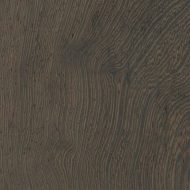
Wenge
Durability: Durable
Colour: Dark
Sizes available: 50 mmTrade Name: Wenge Botanical Species: Millettia laurentii Other Names: Conga palissandre, Panga Panga Country of Origin: Zaire Air Dry Density: 880kgs/m³ Durability: Durable Strength: SD2 Seasoning: • Dries slowly with a tendency to surface check. Characteristics: • The heartwood is dark brown with fine, close blackish veining giving the wood a handsome appearance. • A very heavy hardwood, it is straight grained with a coarse texture. Working Qualities: • The timber is moderately hard, tough and strong, however it is easily worked. • It finishes well and takes an excellent polish. Uses: • Fine furniture, flooring and interior decoration. Product Attributes: • A distinctive unique grain. • Straight grained with coarse texture. • Easily worked. • Takes stains and polishes very well. • Dark brown with beige and black flecks. • Very heavy, hard timber. • Veneers available. Product Limitations: • Random widths. • Variable in supply. -
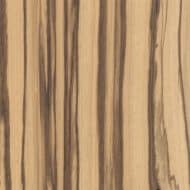
Zebrano
Durability: Durable
Colour: Medium
Sizes available: Not AvailableTrade Name: Zebrano Botanical Species: Brachystegia fleuryana Other Names: Zebra wood Country of Origin: Gabon and Cameroons Air Dry Density: 820kgs/m³ Durability: Durable Strength: SD4 Seasoning: • Dries slowly with a tendency to surface check. Characteristics: • The heartwood is golden brown, with narrow-veining or streaks of dark brown to almost black, giving a zebra stripe appearance. • It is fairly hard with good toughness and impact properties. Working Qualities: • Easily worked although interlocked grain can cause some planning problems. • Glues, sands, stains and polishes well. Uses: • Cabinet-making, boat building and interior decoration. Product Attributes: • Distinctive unique grain. • Easily worked with care. • Takes stains and polishes well. • Golden, yellow-brown with narrow streaks of dark black / brown. • Veneers available. Product Limitations: • Interlocked grain can cause problems. • Variable in supply. • Very opened grained. • Needs clear filling. • No fixed widths.
Softwoods
-
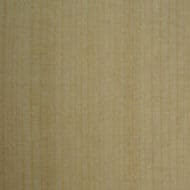
Alaskan Yellow Cedar
Durability: Durable
Colour: Light
Sizes available: 50 mmTrade Name: Alaskan Yellow Cedar Botanical Species: Chamaecyparis Spach, Cupressus nootkatensis Lamb Other Names: Pacific Coast or Alaska Yellow Cedar, Yellow Cyprus Country of Origin: Pacific Coast of North America Air Dry Density: 500kgs/m³ Durability: Durable Strength: 6 (on a scale of 1 – 10) Seasoning: • Dries fairly easily and without undue degrade. Characteristics: • A pale yellow-coloured wood, with a fine even texture, which is straight grained. • It has no appreciable colour when dry. • Very stable. • Acid resistant. Working Qualities: • The timber is easily worked and finishes excellently. • It can be glued, stained, polished and varnishes well. Uses: • High class joinery, boat building, cabinet work and veneers. Product Attributes: • Consistent yellow colour. • Straight grain. • Machines and turns very well. • Veneers available. • fixed widths available. Product Limitations: • Available in 50mm thickness only. -
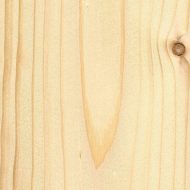
Baltic Spruce
Durability: Non-Durable
Colour: Light
Sizes available: 50 mmTrade Name: Baltic Spruce Botanical Species: Picea abies (or, excelsa) Other Names: The common name in Australia & New Zealand is Baltic Pine although elsewhere it is normally called Norway Spruce or Whitewood of the country of origin i.e. Swedish Whitewood. Color Heartwood colour is white to pale yellow with the sapwood indistinguishable. Air Dry Density: 450kgs/m³ (average) Durability: Non-durable Texture: Fine texture Grain: Unlike other similar European timbers the growth rings are not very prominent and the wood is more lustrous. Although the small tight knots are common the timber is usually straight grained. Tree: In most areas the tree grows to an average of 36 metres high with diameters about 750mm, however in the Carpathian Mountains of central Europe they grow up to 60 metres and almost 2 metres in diameter. Uses: Flooring, framing, panelling & cabinetry work. Additional Info: The timber is easily worked with hand or machine tools and when planed comes to a very smooth clean finish however the presence of very small tight knots may cause some difficulties. It takes nails and screws, and glues well and is a very good base for all coatings including stains, paints and varnish. The sapwood however is susceptible to Anobium borer and should be regularly inspected. -
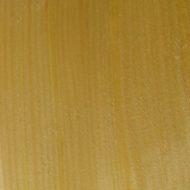
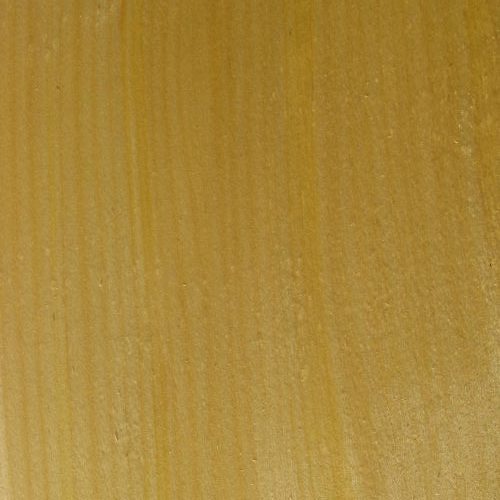
Kahikatea
Durability: Non-durable
Colour: Medium
Sizes available: 25, 50 mmTrade Name: Kahikatea Botanical Species: Podocarpus dacrydioides Other Names: White Pine Country of Origin: New Zealand Air Dry Density: 465kgs/m³ Durability: Non-durable Strength: Seasoning: • The timber dries easily and well, but there is a danger of sap-stain during air drying. • There is small movement in service. Characteristics: • The creamy-white wood of kahikatea is light and easily worked. It is straight grained with a fine even texture, providing long, clear lengths in wide widths for sawing. • It is not durable and is especially subject to damage by house borer. • Nevertheless, it has many excellent properties including the absence of odour. Working Qualities: • The timber works easily and well with both hand and machine tools. • It holds nails and screws well, glues and finishes smoothly to a surface ideal for painting, varnishing or polishing. Uses: • Building construction, scaffold planks, fascia boards, weatherboards (when treated), flooring, framing, joinery, kitchen furniture, boat building, domestic woodware, mouldings, casks and boxes. • It is an excellent turnery wood. • Also used in the manufacture of ice cream spoons and cocktail sticks, toothpicks etc. • Selected logs converted into plywood and decorative veneers. • It is not recommended for exterior use with stain or a dark finish. • Often H3 treated for boat building purposes. Product Attributes: • The wood is odourless • Veneers available. Product Limitations: • Subject to damage by house borer. -
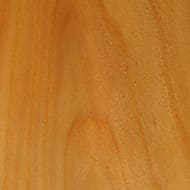

Macrocarpa
Durability: Moderately Durable
Colour: Light
Sizes available: 25, 50 mmTrade Name: Macrocarpa Botanical Species: Cupressus macrocarpa Other Names: Monterey Cypress Country of Origin: U.S.A Air Dry Density: 485kgs/m³ Durability: Moderately Durable Strength: Seasoning: • It is difficult to kiln dry with cell collapse and checking. • Low shrinkage factor. Characteristics: • Honey brown in colour and beautifully scented. • It is a moderately stiff, strong timber. Working Qualities: • Macrocarpa machines and turns well owing to its fine texture. • Will accept a variety of paints, oils and varnishes. Uses: • Structural beams, framing, flooring, sarking, wall paneling, cabinetry, exterior cladding, decking, pergolas, furniture and landscaping. Product Attributes: • Naturally resistant to insect and fungal attack. Product Limitations: • Difficult to kiln dry. -
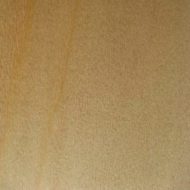
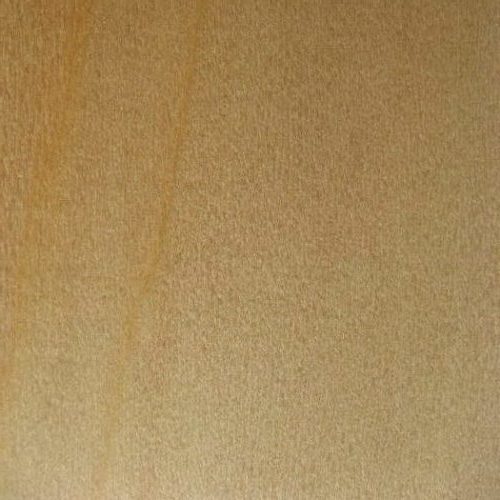
Malaysian Kauri
Durability: Moderately Durable
Colour: Light
Sizes available: 25, 40, 50 mmTrade Name: Kauri – Malaysian Botanical Species: Agathis borneensis Other Names: Country of Origin: Malaysia Air Dry Density: 540kgs/m³ Durability: Moderately Durable Strength: 6+ (on a scale of 1 – 10) Seasoning: • Malaysian Kauri presents no special problems in drying and can be kiln dried from the green in 25, 40 and 50mm. • Heavier sizes can be air dried to prevent surface checking. • The timber has high degree of stability and is subject to medium shrinkage. Characteristics: • Heartwood is pale cream to golden brown in colour, the sapwood is straw to pale brown, texture is fine and the grain is mainly straight. • It is non-tainting. Working Qualities: • It is an excellent timber for sawing and machining. • It planes and sands well with only slight chipping in regions of reverse grain. • It screws and glues well and stains and polishes well. • Turning properties are excellent. • It can be drilled cleanly. Uses: • Kauri has a traditionally world-wide reputation in boat building, i.e. planks, masts, spars, and oars, because of its excellent working properties and high degree of stability it is used for exterior / interior joinery, furniture, weatherboards, panelling, sarking, mouldings, picture framing and turnery. Product Attributes: • Pale cream to golden brown timber. • Takes stain and polish well. • Veneers available in Fijian Kauri. • Fixed widths available. • Good stability. • Fine texture with mainly straight grain. • Easily machined or turned. Product Limitations: • Can be easily bruised. -
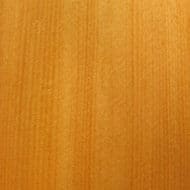
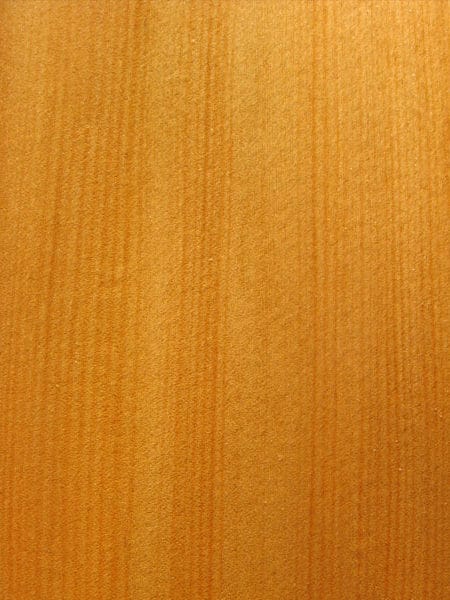
NZ Matai
Durability: Durable
Colour: Medium
Sizes available: 25 mmTrade Name: Matai Botanical Species: Podocarpus spicatus Other Names: Black Pine Country of Origin: New Zealand Air Dry Density: 600kgs/m³ Durability: Durable Strength: 6+ (on a scale of 1 – 10) Seasoning: • The timber has high degree of stability and is subject to medium shrinkage. Characteristics: • Heartwood is a straw to yellow colour with the occasional reddish tinge and even colour, the sapwood is white and can be easily distinguished, the texture is fine and the grain is mainly straight. Working Qualities: • The timber planes and sands well with only slight chipping in regions of reverse grain. • It screws and glues well and stains and polishes well. • Turning properties are excellent. • It can be drilled cleanly. • Pre-boring for nailing is recommended. Uses: • Used extensively for T & G flooring in older houses, interior joinery, furniture, panelling, sarking, mouldings. Product Attributes: • Pale cream to golden brown timber. • Veneers available. • Fixed widths available. • Good stability. • Fine texture with mainly straight grain. • Easily machined or turned. • Takes stain and polish well. Product Limitations: • Wider widths are often difficult to source. -
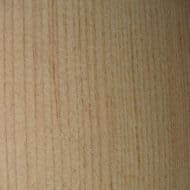
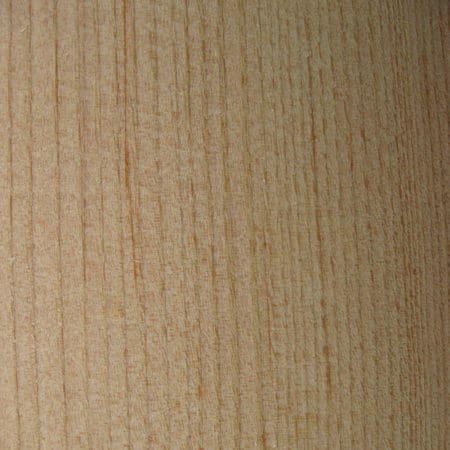
Oregon Pine
Durability: Durable
Colour: Medium
Sizes available: 50, 100 mmTrade Name: Oregon Botanical Species: Pseudotsuga menziesi Other Names: Douglas Fir. Country of Origin: North America also Plantations in New Zealand Air Dry Density: 550kgs/m³ Durability: Durable Strength: 7 (on a scale from 1 – 10) Seasoning: • Relatively easy to dry but the tangential surface is prone to surface checking. • End splitting is likely if drying is too rapid. Characteristics: • Heartwood is a pale pinkish brown and the sapwood is almost white. • The wood is typically straight grained with a fine even texture but varying in density according to the locality of growth. Working Qualities: • Care is needed in dressing because the softer early wood may be compressed and later, on recovery, produce a ridged surface. This characteristic makes it unsuitable for steam bending. • Inclined to split when nailed near ends of piece. Resin content can be high, causing occasional bleed-through of paint films. Uses: • General timber for internal framing, interior joinery, boat building, sarking. Product Attributes: • Consistent colour. • Machines and turns well. • Quarter sawn boards available. • Good lengths available. • Very stable in use. • Veneers available. Product Limitations: -

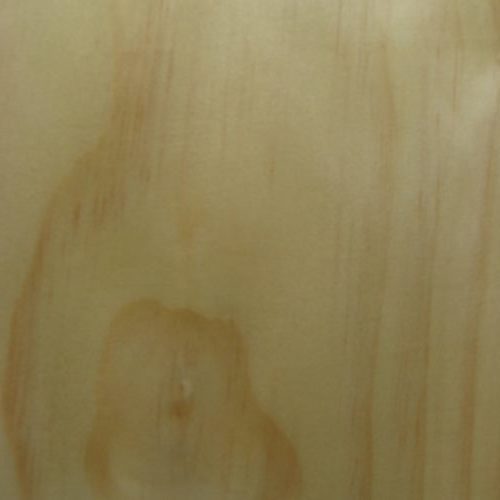
Pine Radiata
Durability: Non-durable
Colour: Light
Sizes available: 25, 40, 50, 75, 100 mmTrade Name: Radiata Pine Botanical Species: Pinus radiata Other Names: Monterey Pine Country of Origin: North America Air Dry Density: 500kgs/m³ Durability: Non-durable Strength: 6 (on a scale of 1 – 10) Seasoning: • Dries well with little degrade. Characteristics: • The timber is low in density and fairly soft, often with very wide annual growth rings. • The heartwood is light brown to yellow, the sapwood white to pale yellow, but often indistinct. • The grain is usually straight, but knots are common. Working Qualities: • Radiata Pine is very easily worked with standard tools, although its knotty character and resin canals can cause premature blunting cutters. • Its open grain structure readily accepts preservative treatment, which can provide protection to the highest level. Uses: • Suitable for furniture and cabinets, joinery, paneling, construction mouldings and decking. • When used outside tanalised timber should be used. • Selected logs are sliced for attractive decorative veneers for paneling. Product Attributes: • Veneers available. Product Limitations: -

Rimu NZ
Durability: Moderately Durable
Colour: Medium
Sizes available: 25, 50 mmTrade Name: Rimu Botanical Species: Dacrydium cupressinum Other Names: Red Pine Country of Origin: New Zealand Air Dry Density: 560kgs/m³ Durability: Moderately Durable Strength: SD7 Seasoning: • Medium Characteristics: • Rimu is a medium density softwood with a fine textured grain, the heart wood is reddish brown. • The middle zone known as coloured Rimu has a light brown colour and the sap wood a Pale lighter brown tone. Working Qualities: • The timber works easily and well with both hand and machine tools. it glues and finishes smoothly to a surface ideal for painting, varnishing or polishing. Uses: • T & Gflooring, joinery, kitchens, furniture, mouldings, cabinetmaking Product Attributes: • The Heartwood has a beautiful lustre when oiled. • Veneers available. Product Limitations: • Tendency to be brittle with age. -
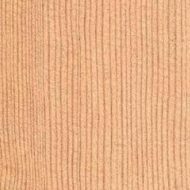
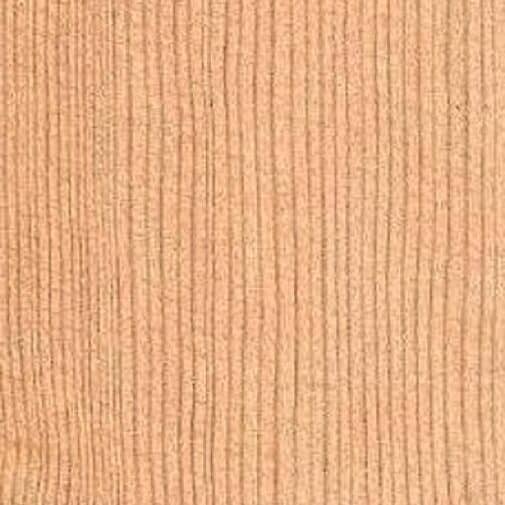
Western Hemlock
Durability: Non durable
Colour: Medium Brown
Sizes available: 100x50, 200x50Trade Name: Western Hemlock Botanical Species: tsuga heterophylla Other Names: Alaskan Pine Country of Origin: Canada – North America Air Dry Density: 495kg/m3 Durability: Non Durable Strength: SD6 Seasoning:
Dries fairly easily , Stable in service when vertical grain.Characteristics:
Heart wood is straw colour to medium brownWorking Qualities:
The timber is easily worked with both machine and hand tools & finishes excellently.
It can be glued, stained, polished and varnishes well.Uses:
High class interior joinery, boat building, T&G Paneling, Blinds & louvers, Display screens, Mouldings, cabinet work.Product Attributes:
Pale colour.
Straight grain.
Machines well.
Fixed widths AvailableProduct Limitations:
Available in 50mm thickness only.
-

Western Red Cedar
Durability: Durable
Colour: Medium
Sizes available: 25, 40, 50, 65, 75, 100, 150 mmTrade Name: Western Red Cedar Botanical Species: Thuja plicata Other Names: Giant Arbor Vitea, Red Cedar Country of Origin: U.S.A, Canada Air Dry Density: 390kgs/m³ Durability: Durable Strength: 4 (on a scale of 1 – 10) Seasoning: • Smaller sizes dry easily, larger boards need extra care to prevent Internal checking and collapse. • Almost no tendencies to warp and check once dry with little swelling or shrinking movement. Characteristics: • A light timber with a distinctive odour, it is non-resinous and straight grained, with obvious growth rings. • Assumes a uniform reddish-brown colour once dried. • After long exposure wood becomes silver grey, this weathered look is often sought after. Working Qualities: • The timber is easily worked, but its brittle nature can cause splintering and its soft character can lead to chip-bruising. • Care should be taken when planning and moulding. • Sharp cutters will also help create a nice finish. • Stains and paints well. Uses: • Interior panelling, fine furniture, interior and exterior joinery, weatherboards and cladding. Product Attributes: • Available in fixed widths. • Veneers available. • Stains and paints well. • Long lengths available.
